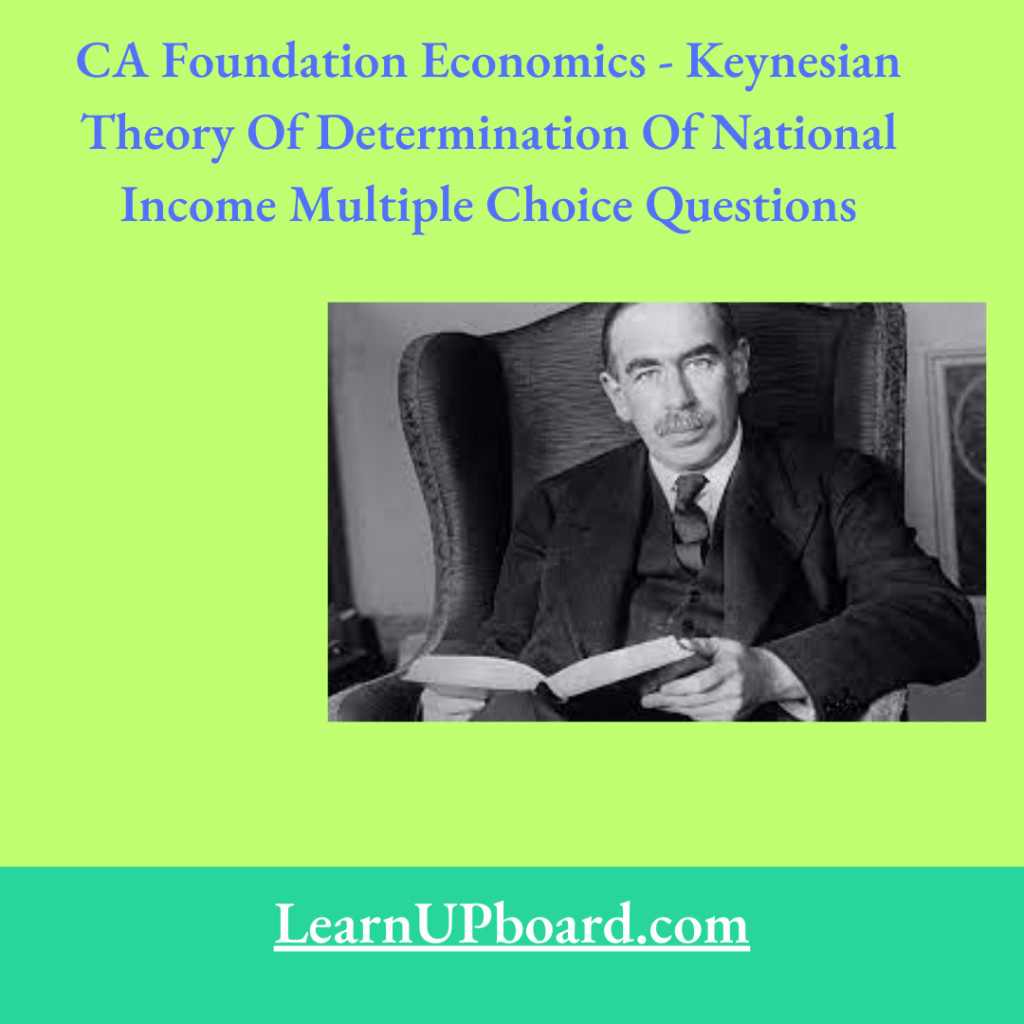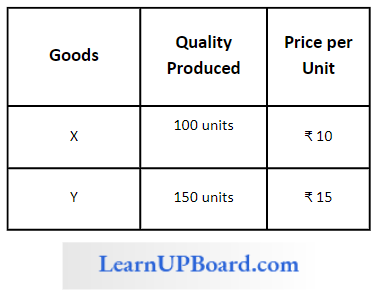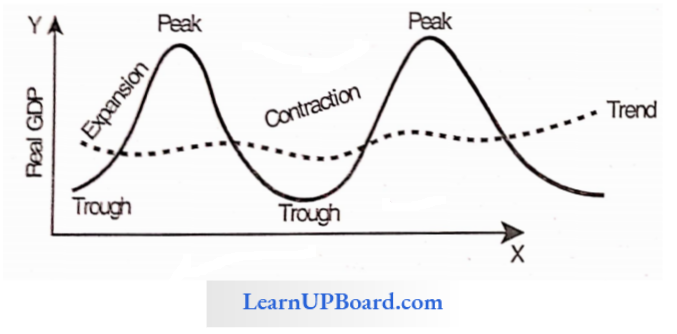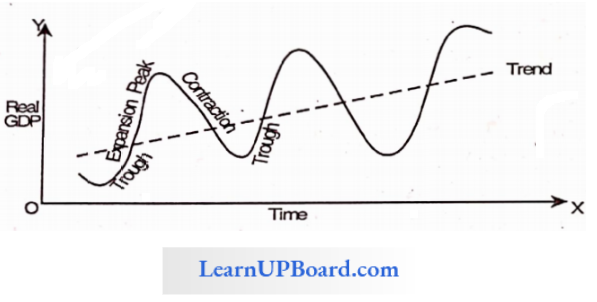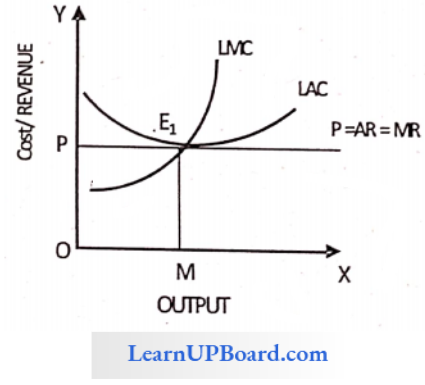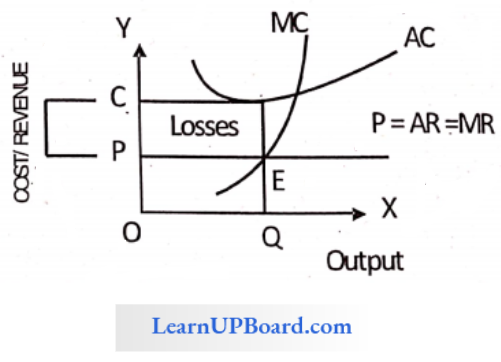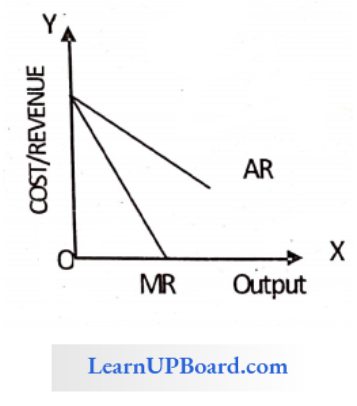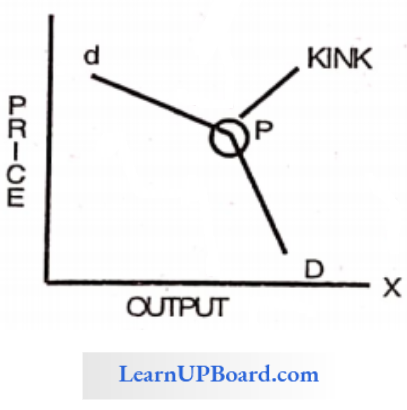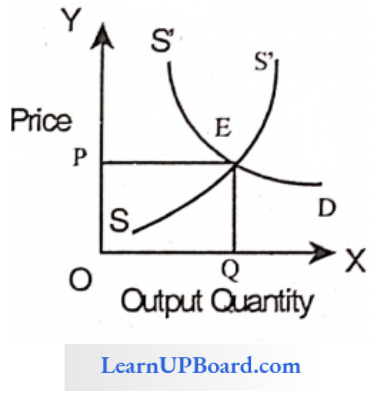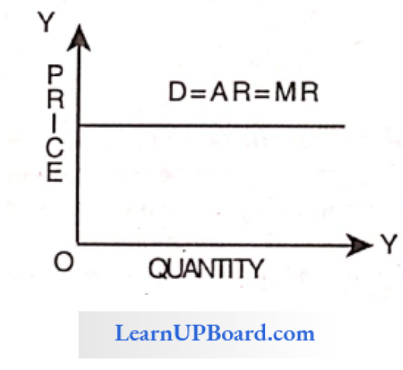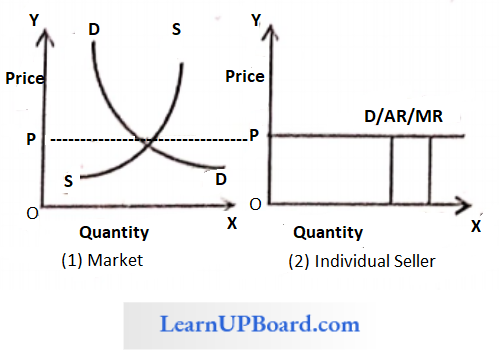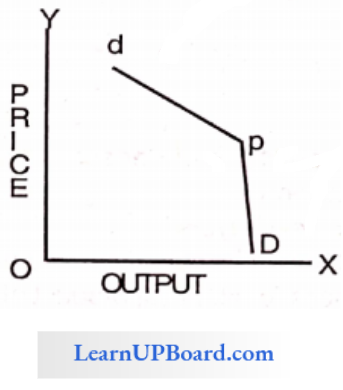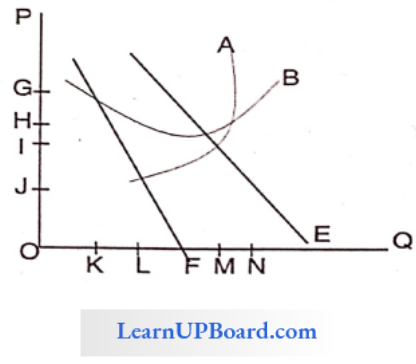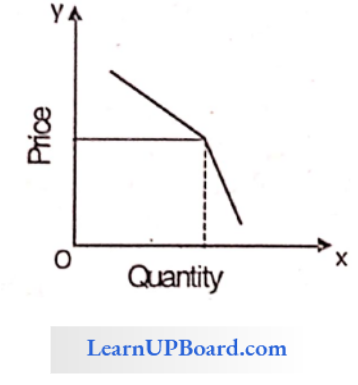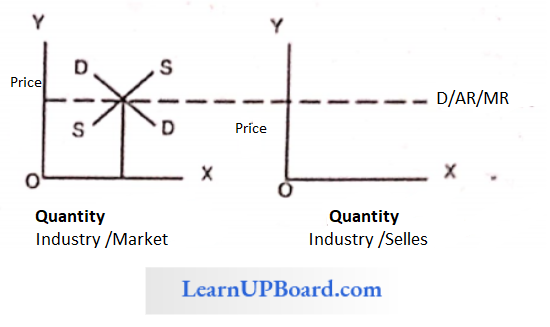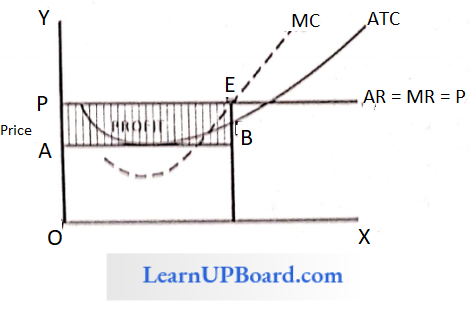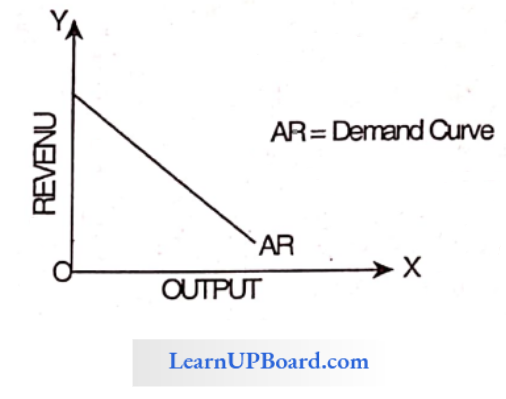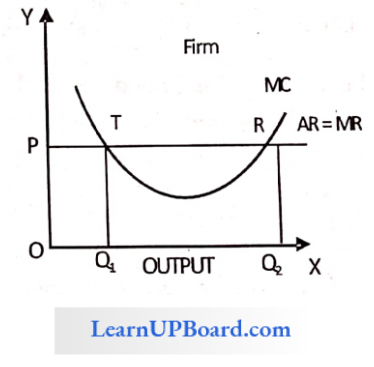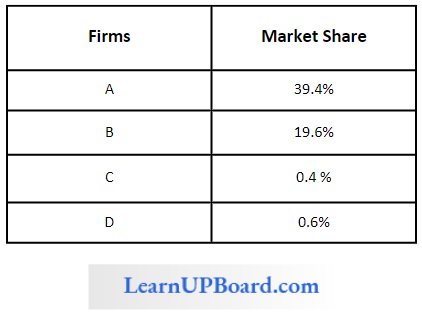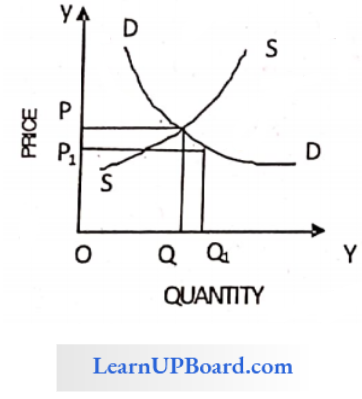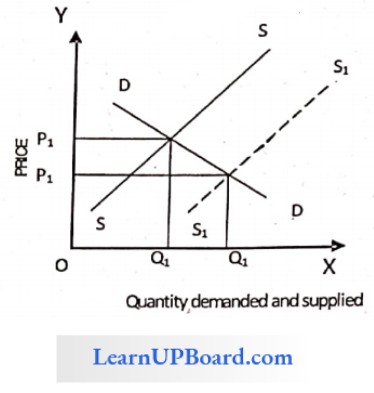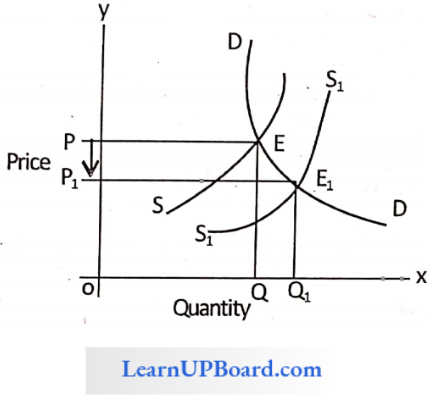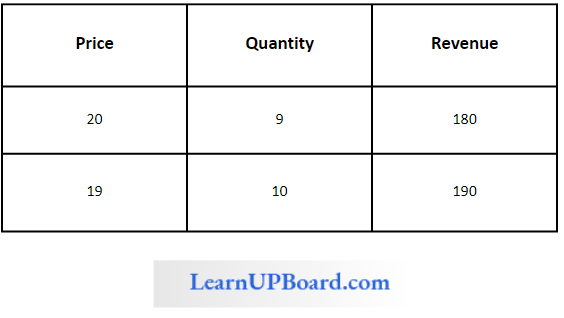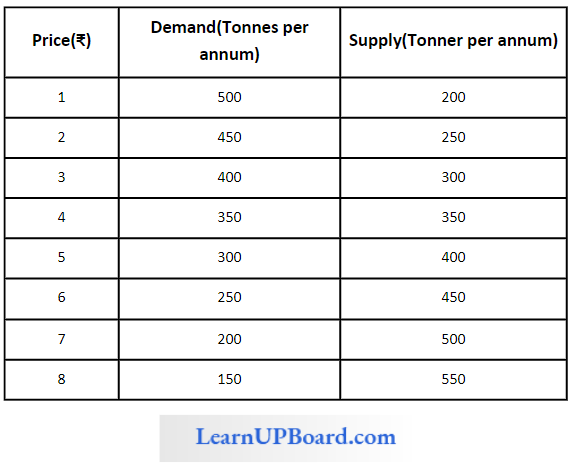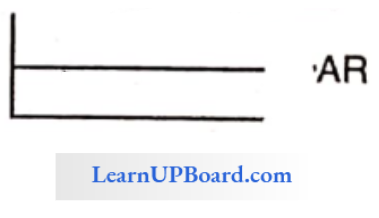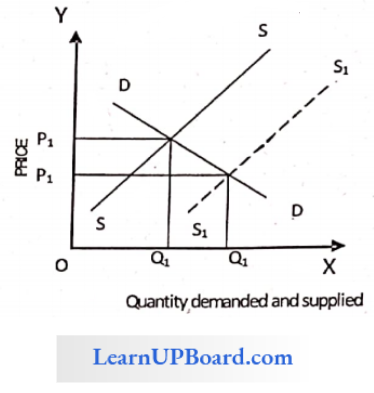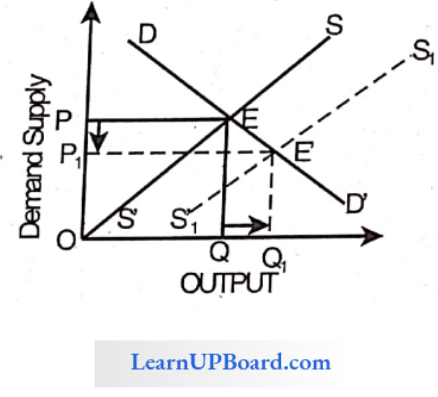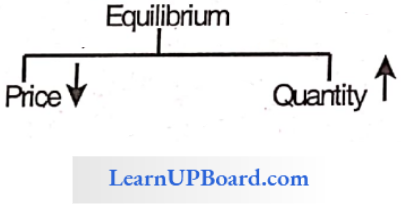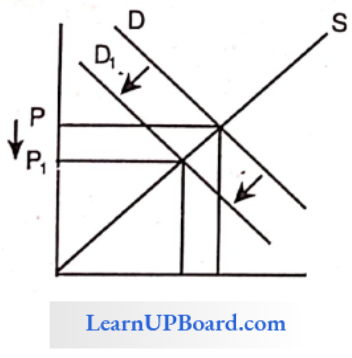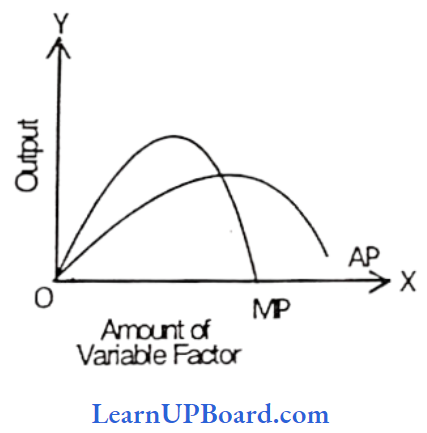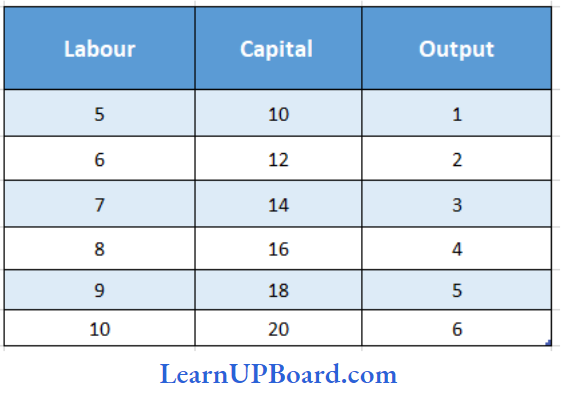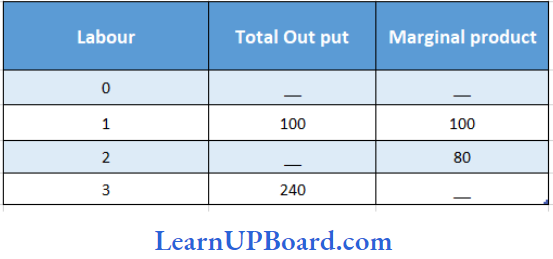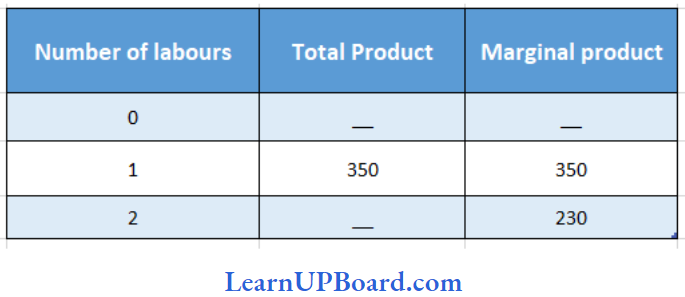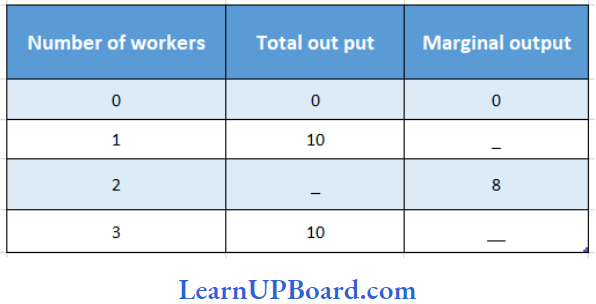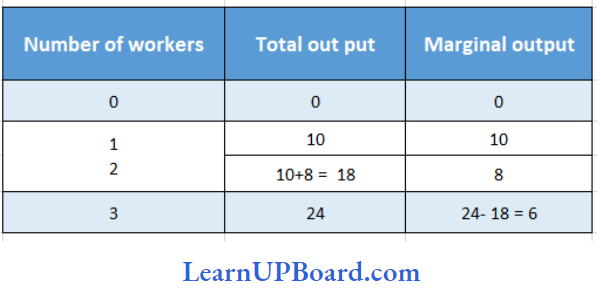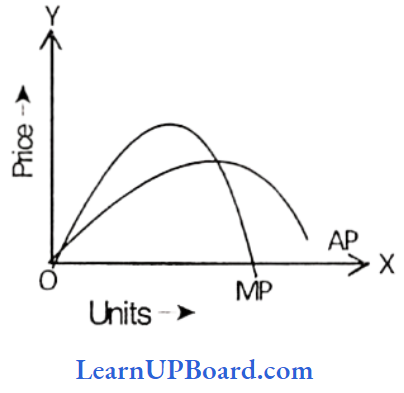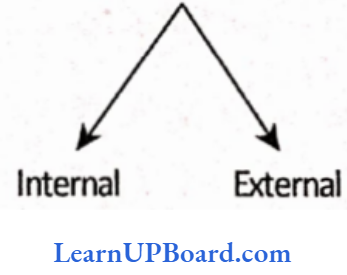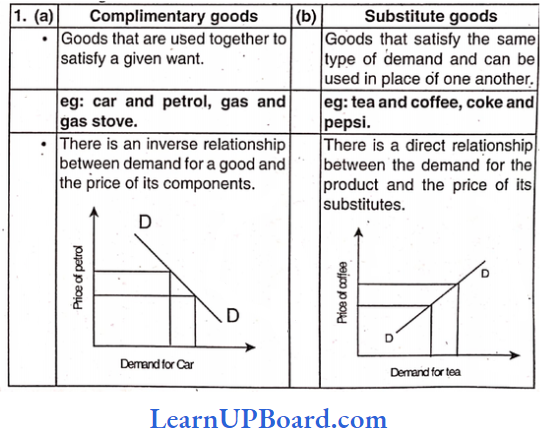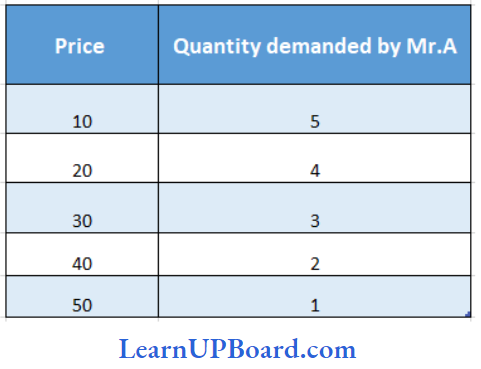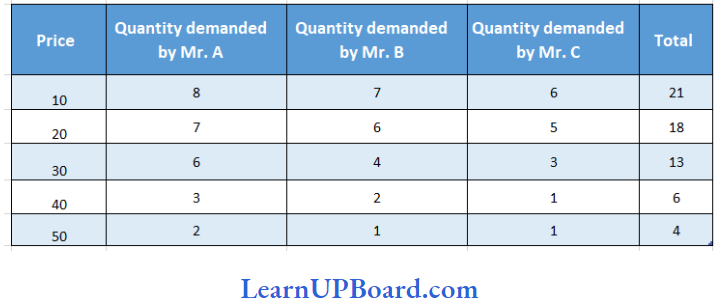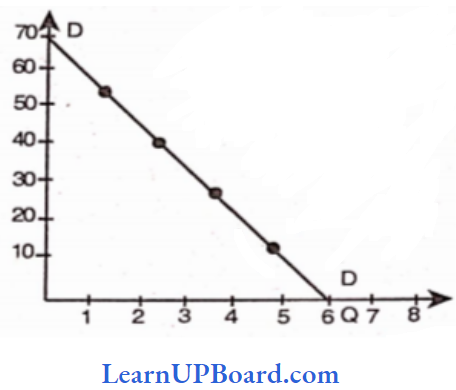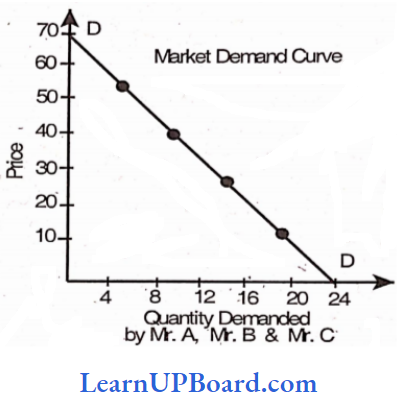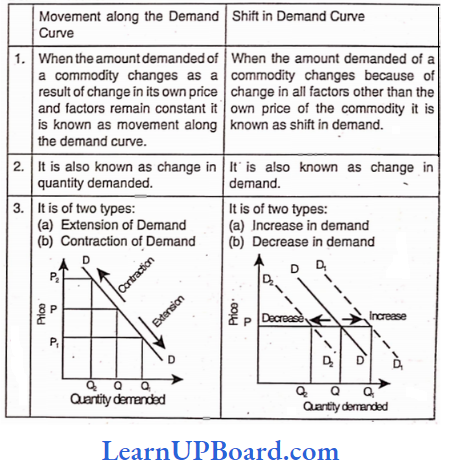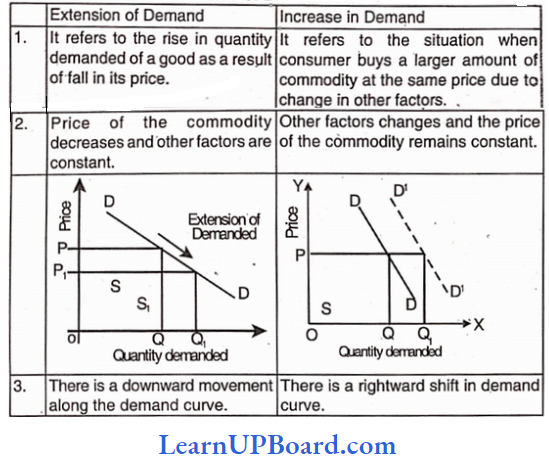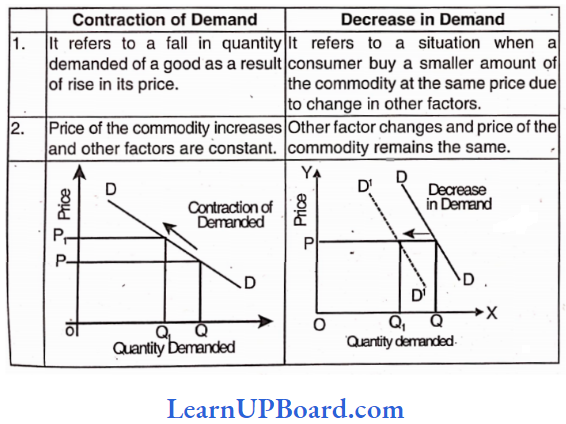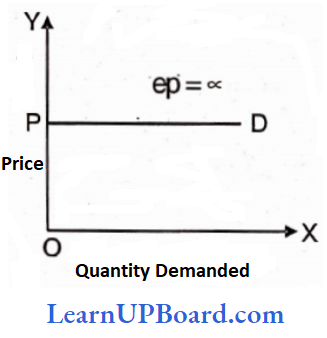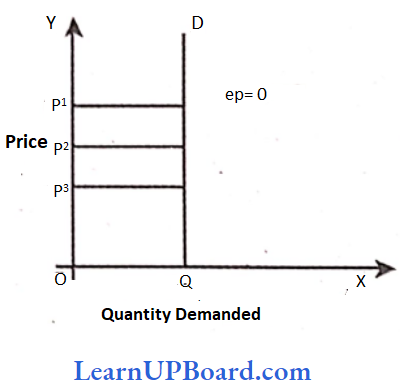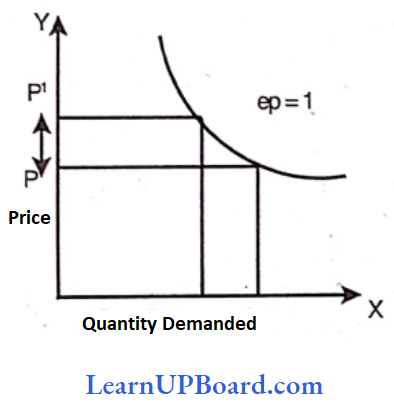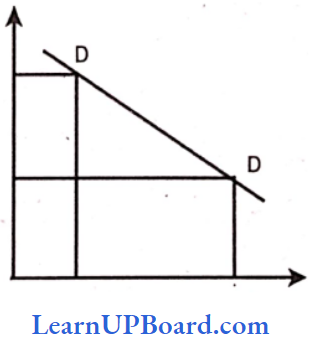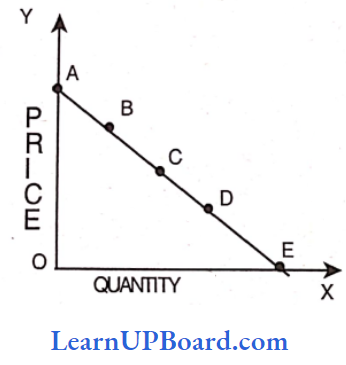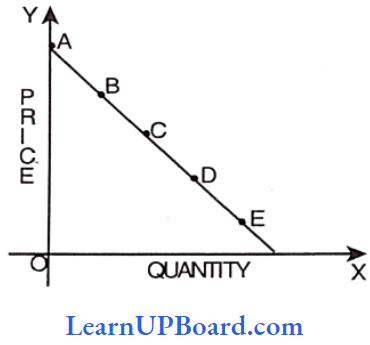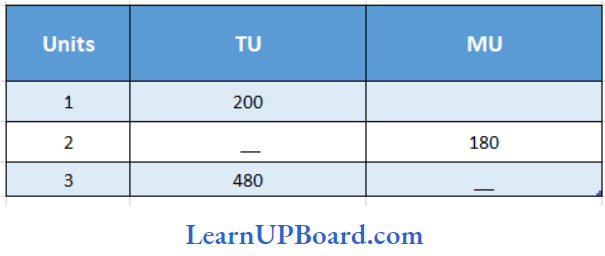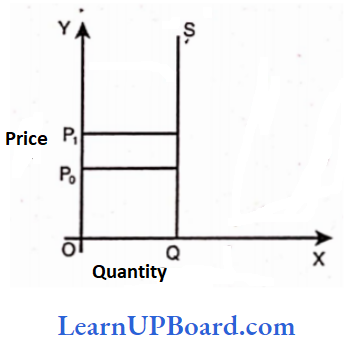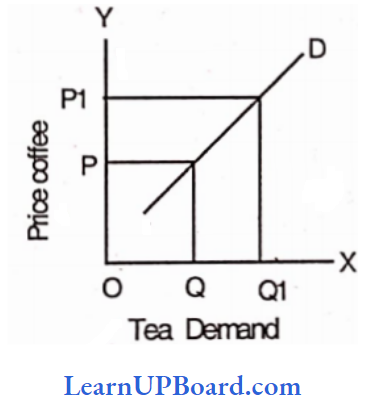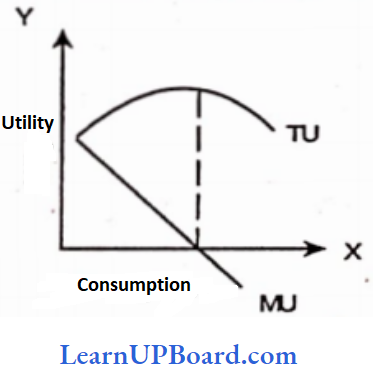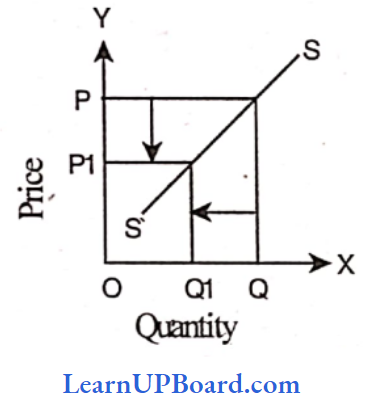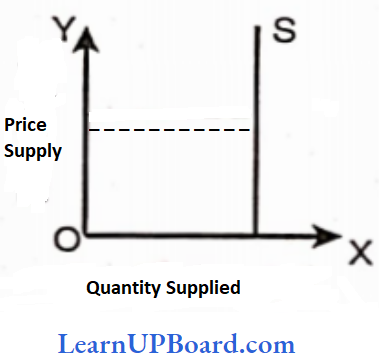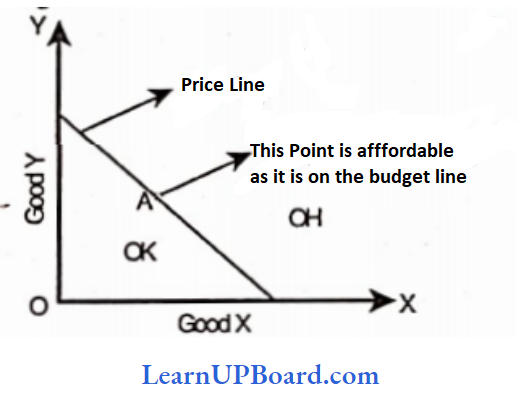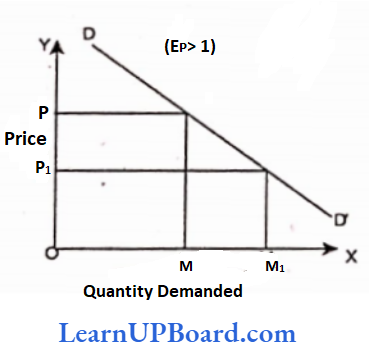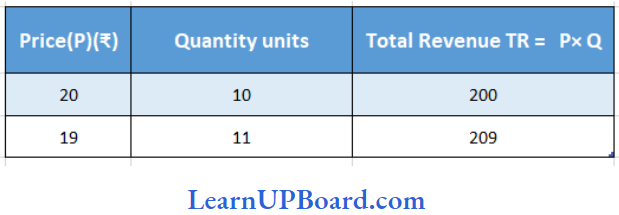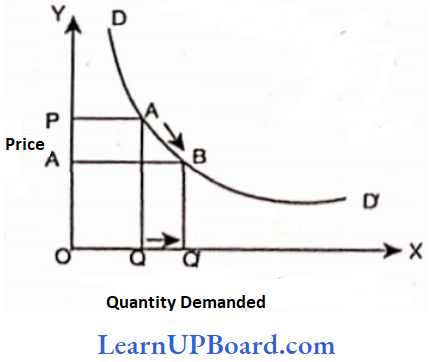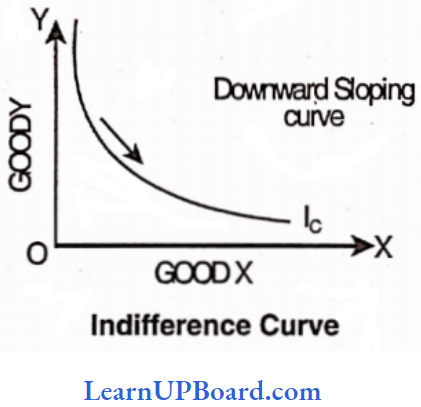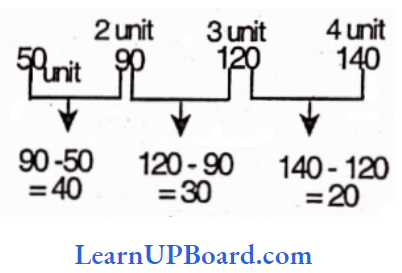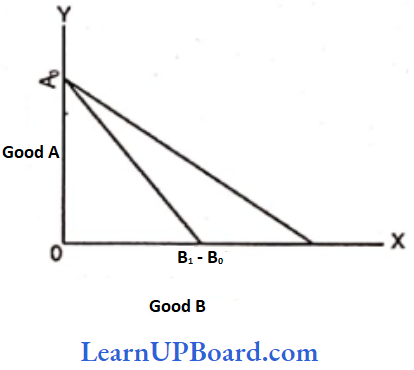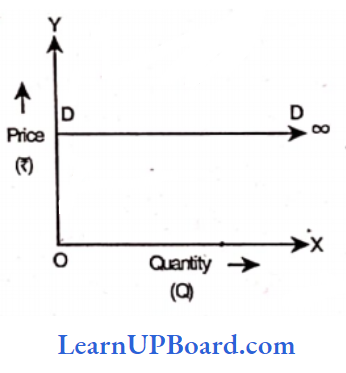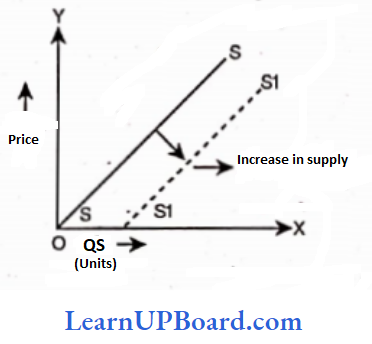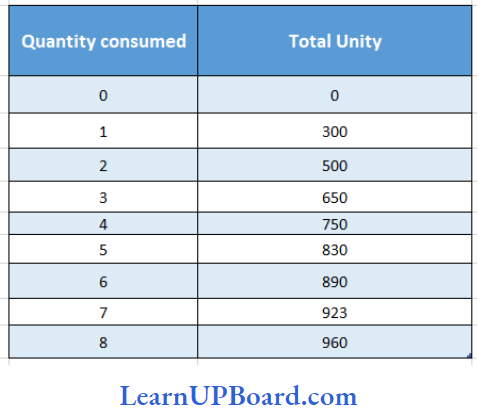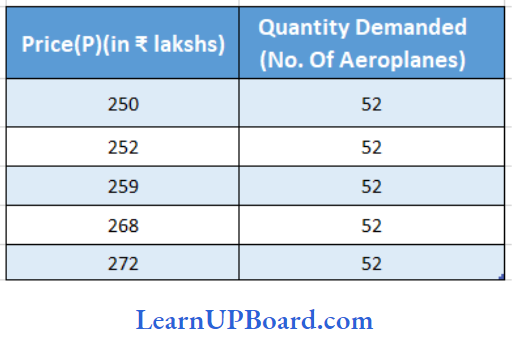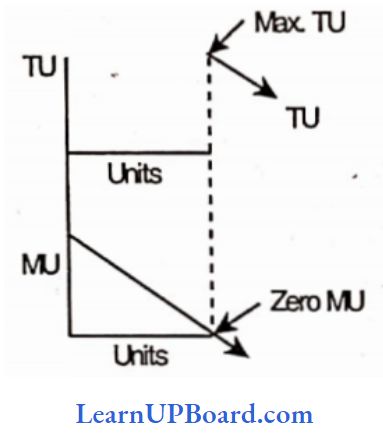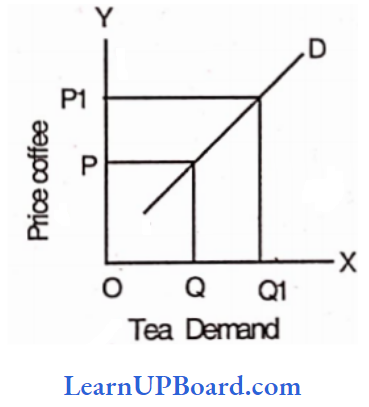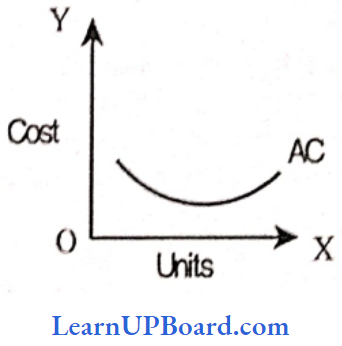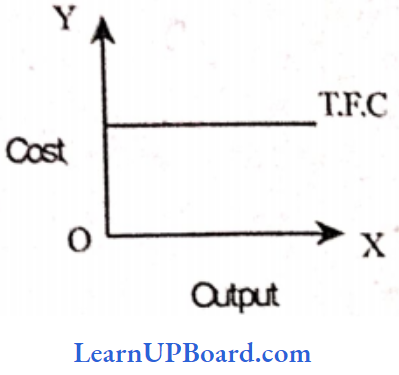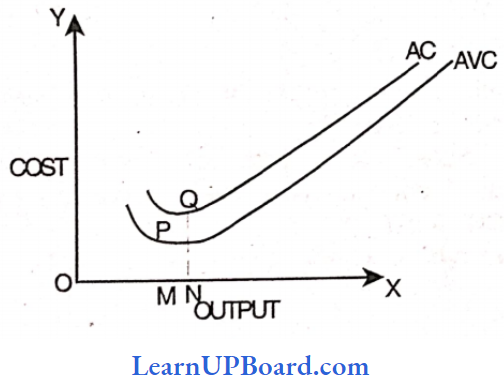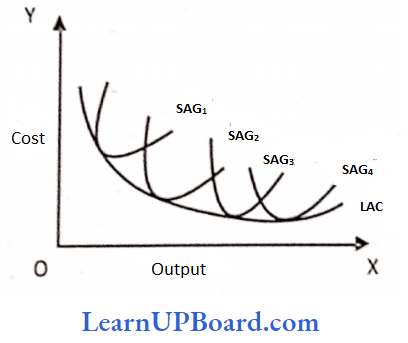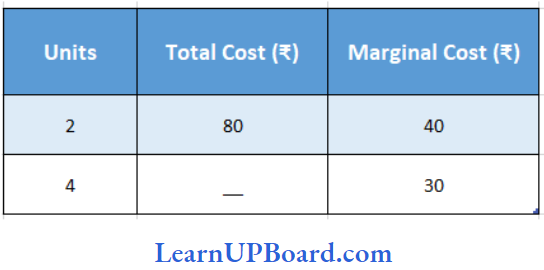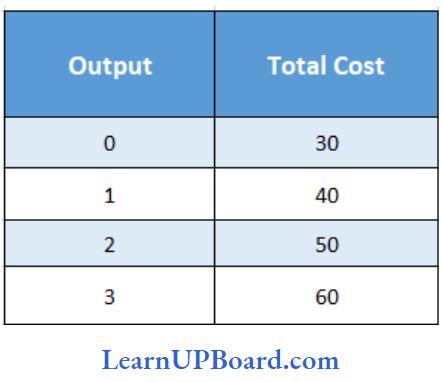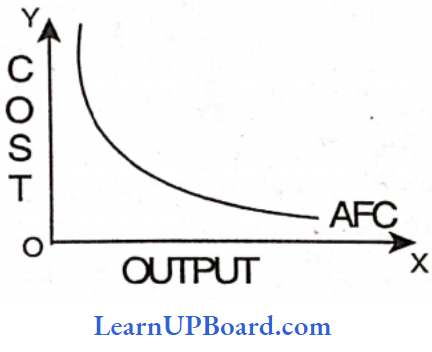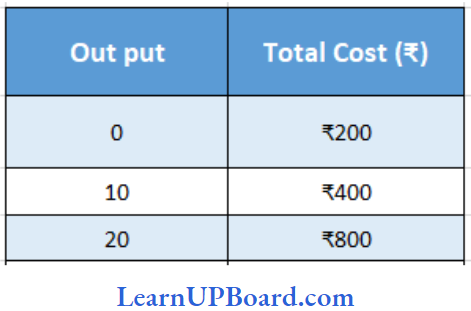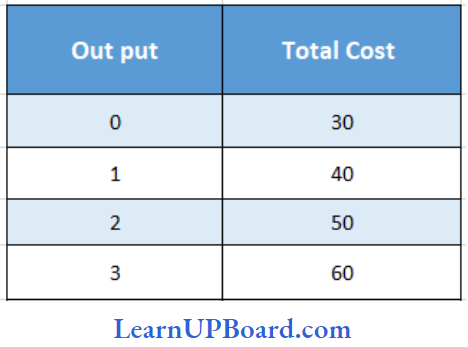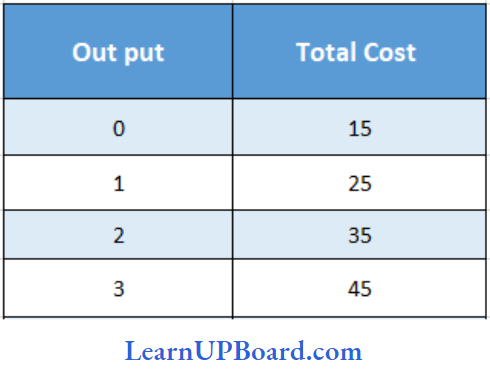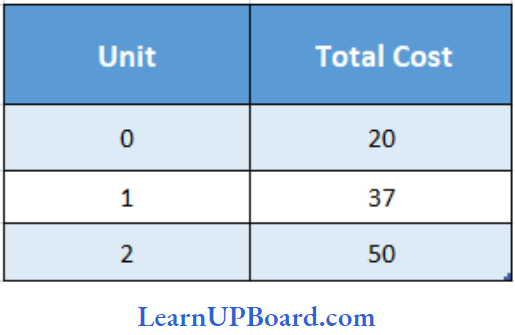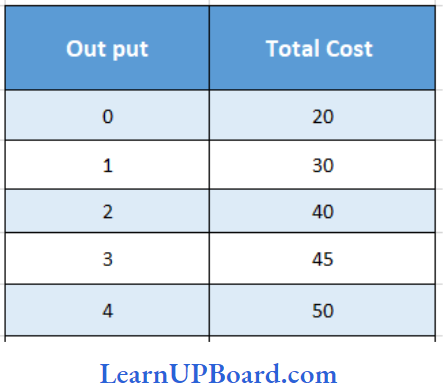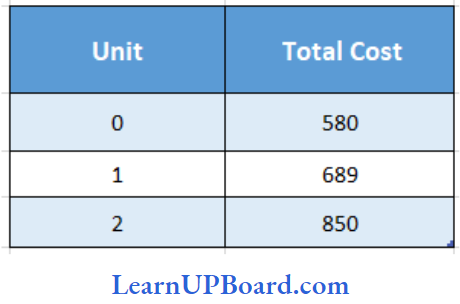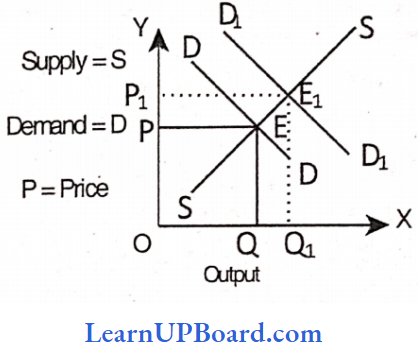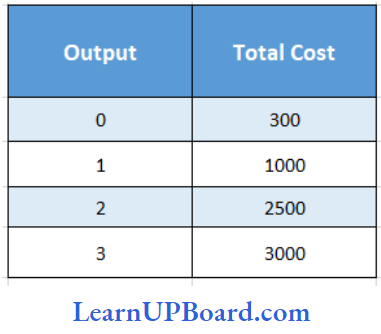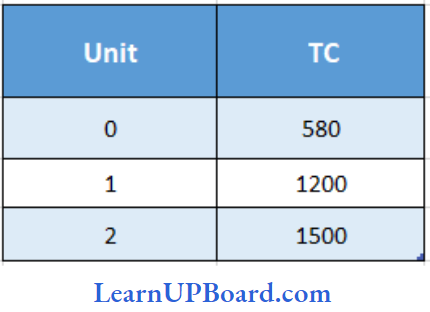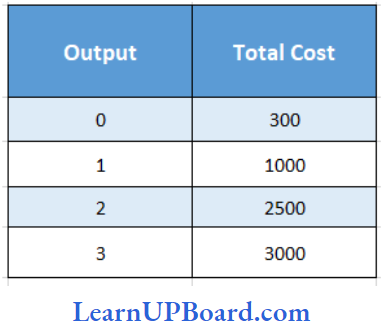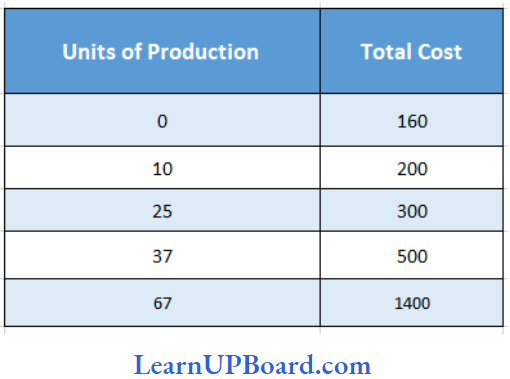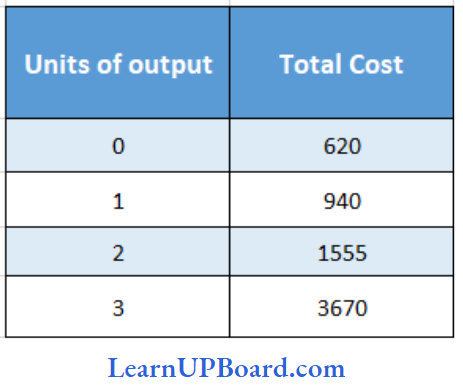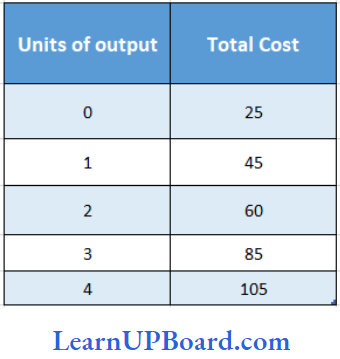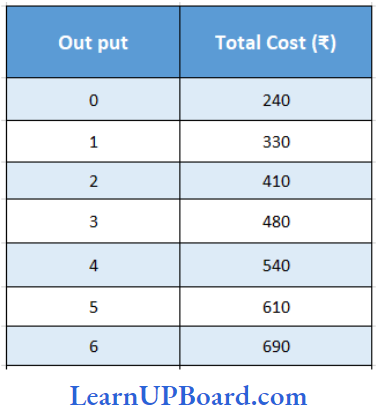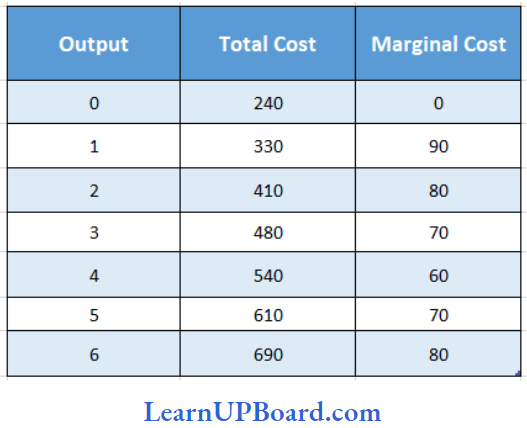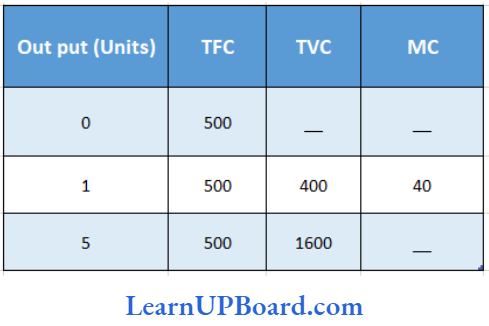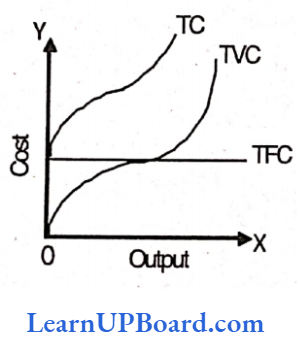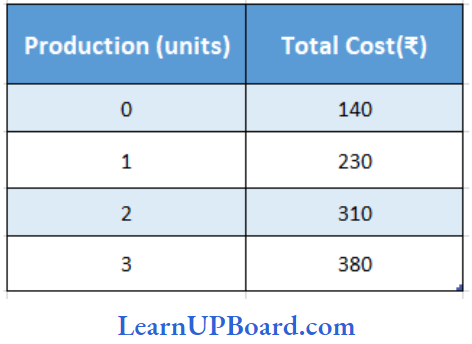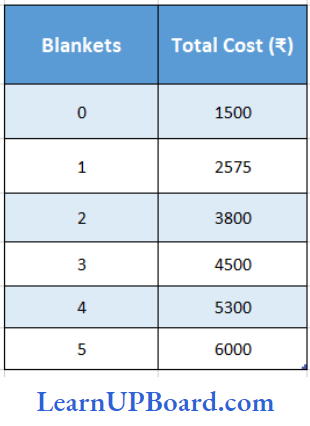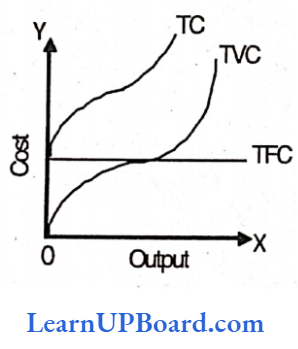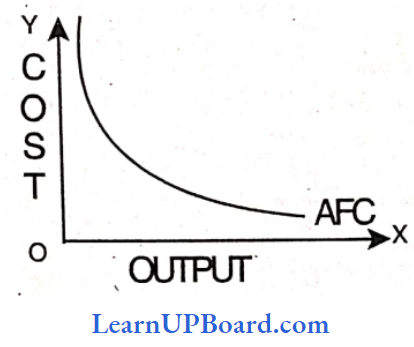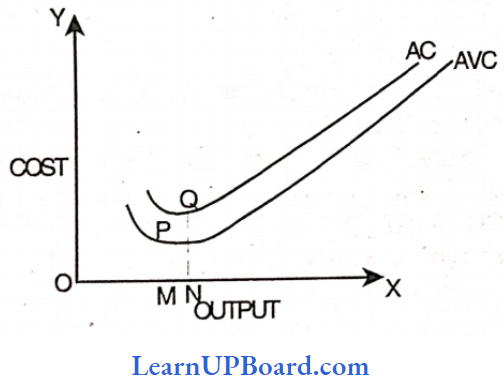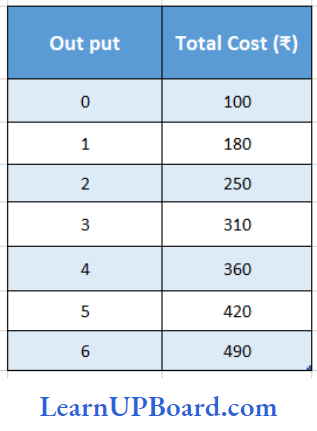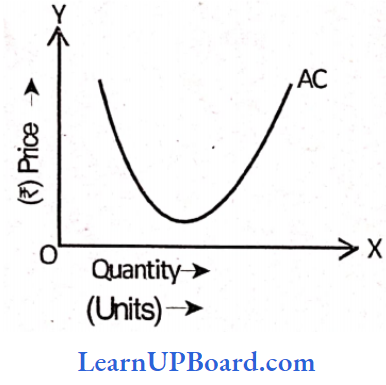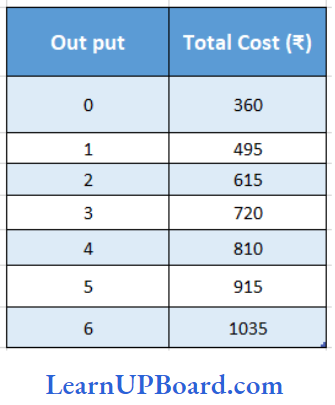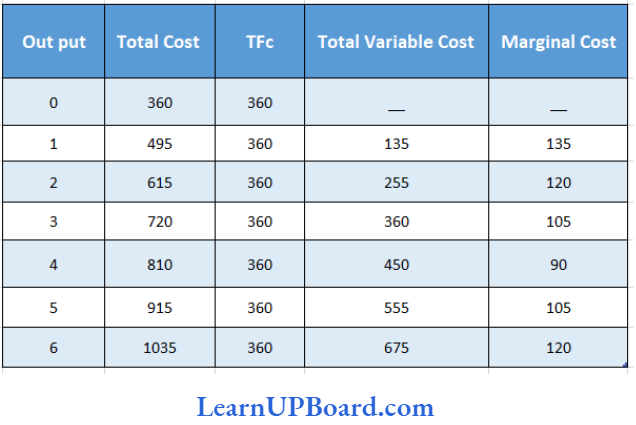CA Foundation Economics Fiscal Policy Introduction Multiple Choice Questions
Question 1. What is Fiscal Policy?
- A policy that regulates the flow of foreign exchange in the economy
- A policy that controls the circulation of currency notes and coins
- A policy that deals with the government’s taxation and spending decisions to influence the economy
- A policy that regulates the interest rates in the financial market
Answer: 3. A policy that deals with the government’s taxation and spending decisions to influence the economy
Explanation:
Fiscal Policy
Fiscal Policy refers to the use of government’s taxation and spending decisions to influence the economy’s overall level of economic activity.
Question 2. The main objectives of Fiscal Policy include
- Controlling inflation and reducing the fiscal deficit
- Regulating the foreign exchange rate and promoting exports
- Maintaining price stability and ensuring balanced economic growth
- Controlling the money supply and stabilizing the financial market
Answer: 3. Maintaining price stability and ensuring balanced economic growth
Explanation:
The main objectives of Fiscal Policy include maintaining price stability, controlling inflation, and ensuring balanced economic growth by managing government spending and taxation
Question 3. Fiscal Policy can be classified into two types
- Monetary Policy and Exchange Rate Policy
- Expansionary Fiscal Policy and Contractionary Fiscal Policy
- Microeconomic Policy and Macroeconomic Policy
- Trade Policy and Investment Policy
Answer: 2. Expansionary Fiscal Policy and Contractionary Fiscal Policy
Explanation:
Fiscal Policy can be classified into two types: Expansionary Fiscal Policy, which involves increasing government spending and reducing taxes to stimulate economic growth, and Contractionary Fiscal Policy, which involves reducing government spending and increasing taxes to control inflation and cool down the economy.

Question 4. When does the government use an Expansionary Fiscal Policy?
- During periods of high inflation and overheating in the economy
- During periods of recession and high unemployment
- During periods of trade deficits and depreciation of the currency
- During periods of budget surplus and surplus revenue
Answer: 2. During periods of recession and high unemployment
Explanation:
The government uses an Expansionary Fiscal Policy during periods of recession and high unemployment to stimulate economic growth and increase aggregate demand.
Question 5. What is the primary tool used by the government in implementing Fiscal Policy?
- Printing of currency notes and coins
- Setting interest rates in the banking sector
- Regulation of foreign trade and exports
- Government spending and taxation decisions
Answer: 4. Government spending and taxation decisions
Explanation:
Government spending and taxation decisions are the primary tools used by the government in implementing Fiscal Policy to influence the level of economic activity.
Question 6. How does Contractionary Fiscal Policy aim to control inflation?
- By reducing the money supply in the economy
- By increasing government spending on infrastructure projects
- Reducing interest rates to boost investment and consumption
- By reducing government spending and increasing taxes
Answer: 1. By reducing government spending and increasing taxes
Explanation:
Contractionary Fiscal Policy aims to control inflation by reducing government spending and increasing taxes, which reduces aggregate demand and helps cool down the economy.
Question 7. Fiscal Policy operates through its impact on
- Monetary policy and exchange rates
- Interest rates and credit availability
- Government administration and bureaucracy
- Fiscal deficits and trade imbalances
Answer: 2. Interest rates and credit availability
Explanation:
Fiscal Policy operates through its impact on interest rates and credit availability in the economy, which, in turn, affects consumption and – investment decisions.
Question 8. What are the limitations of Fiscal Policy?
- Limited government control over taxation and public spending
- The inability to influence the money supply and interest rates
- Time lags in the implementation of fiscal measures and their impact
- The lack of coordination between fiscal and monetary policies
Answer: 3. Time lags in the implementation of fiscal measures and their impact
Explanation:
limitations of Fiscal Policy
One of the limitations of Fiscal Policy is the existence of time lags in the implementation of fiscal measures and their impact on the economy. Fiscal measures may take time to have their desired effect, leading to ‘ ’ challenges in timing the policy response appropriately.
Question 9. Fiscal Policy is a tool used by governments to
- Control inflation
- Influence the money supply
- Stabilize the economy through taxation and government spending
- Regulate interest rates
Answer: 3. Stabilize the economy through taxation and government spending
Question 10. Expansionary fiscal policy involves
- Decreasing government spending and increasing taxes
- Decreasing government spending and decreasing taxes
- Increasing government spending and decreasing taxes
- Increasing government spending and increasing taxes
Answer: 3. Increasing government spending and decreasing taxes
Question 11. A contractionary fiscal policy is implemented to
- Encourage borrowing and spending
- Combat recession and control inflation
- Stimulate economic growth
- Increase the money supply
Answer: 2. Combat recession and control inflation
Question 12. When the government’s total expenditures exceed its total revenues in a fiscal year, it results in
- A budget surplus
- A budget deficit
- Fiscal equilibrium
- An inflationary gap
Answer: 2. A budget deficit
Question 13. Automatic stabilizers in fiscal policy refer to
- Automatic adjustments in tax rates and government spending that counter-economic fluctuations
- Fixed government spending that remains constant regardless of economic conditions
- The government’s ability to stabilize the stock market automatically
- The automatic increase in interest rates during a recession
Answer: 1. Automatic adjustments in tax rates and government spending that counter-economic fluctuations
CA Foundation Economics Objectives Of Fiscal Policy
Question 1. What are the primary objectives of Fiscal Policy?
- Regulating the money supply and controlling inflation
- Promoting exports and reducing trade deficits
- Managing government spending and reducing the fiscal deficit
- Maintaining price stability and ensuring balanced economic growth
Answer: 4. Maintaining price stability and ensuring balanced economic growth
Explanation:
Primary objectives of Fiscal Policy
The primary objectives of Fiscal Policy are to maintain price stability, control inflation, and ensure balanced economic growth by managing government spending and taxation.
Question 2. How does Fiscal Policy contribute to economic stability?
- By directly controlling interest rates and money supply
- By influencing the level of aggregate demand and economic activity
- By regulating foreign exchange rates and trade balances
- By promoting savings and investments in the economy
Answer: 2. By influencing the level of aggregate demand and economic activity
Explanation:
Fiscal Policy contributes to economic stability by influencing the level of aggregate demand and economic activity through government spending and taxation decisions.
Question 3. During periods of recession and high unemployment, Fiscal Policy aims to
- Increase government spending and reduce taxes
- Reduce government spending and increase taxes
- Control inflation and cool down the economy
- Reduce interest rates and boost private investment
Answer: 1. Increase government spending and reduce taxes
Explanation:
During periods of recession and high unemployment, Fiscal Policy aims to stimulate economic growth and increase aggregate demand by increasing government spending and reducing taxes. This is known as an Expansionary Fiscal Policy.
Question 4. How does Fiscal Policy help in controlling inflation?
- By directly controlling interest rates and money supply
- By reducing government spending and increasing taxes
- By promoting exports and reducing trade deficits
- Encouraging private investment through tax incentives
Answer: 2. By reducing government spending and increasing taxes
Explanation:
Fiscal Policy helps in controlling inflation by reducing aggregate demand in the economy. This is achieved through a Contractionary Fiscal Policy, which involves reducing government spending and increasing taxes.
Question 5. What is the relationship between Fiscal Policy and economic growth?
- Fiscal Policy has no impact on economic growth.
- Expansionary Fiscal Policy leads to economic growth.
- Contractionary Fiscal Policy leads to economic growth.
- Fiscal Policy only affects the distribution of income.
Answer: 2. Expansionary Fiscal Policy leads to economic growth. Explanation:
Expansionary Fiscal Policy, which involves increasing government spending and. reducing taxes, leads to an increase in aggregate demand and stimulates economic growth.
Question 6. Fiscal Policy can be used to address which of the following economic challenges?
- Political instability and corruption
- Technological advancements and automation
- Income inequality and poverty
- Exchange rate fluctuations and balance of payments
Answer: 3. Income inequality and poverty
Explanation:
Fiscal Policy can be used to address income inequality and poverty by implementing progressive taxation and directing government spending toward social welfare programs.
Question 7. How does Fiscal Policy influence private sector investment?
- By directly controlling interest rates in the financial market
- Providing subsidies and incentives to private companies
- Regulating foreign direct investment (FDI) and trade policies
- By altering the overall level of economic activity and confidence in the economy
Answer: 4. By altering the overall level of economic activity and confidence in the economy
Explanation:
Fiscal Policy influences private sector investment by altering the overall level of economic activity and creating a favorable business environment, which affects business confidence and investment decisions.
Question 8. What is the major challenge in implementing Fiscal Policy effectively?
- Coordinating fiscal measures with monetary policy
- Limitations in government control over taxation and public spending
- Uncertainties in the global economic environment
- Lack of skilled labor and technological advancements
Answer: 1. Coordinating fiscal measures with monetary policy
Explanation:
A major challenge in implementing Fiscal Policy effectively is coordinating fiscal measures with monetary policy to ensure that both policies work coherently and support the overall economic objectives.
Question 9. The primary objective of fiscal policy is to
- Control inflation
- Stabilize the exchange rate
- Maximize government revenue
- Promote economic stability and growth
Answer: 4. Promote economic stability and growth
Question 10. Fiscal policy can be used to reduce unemployment by.
- Decreasing government spending and increasing taxes
- Decreasing government spending and decreasing taxes
- Increasing government spending and decreasing taxes
- Increasing government spending and increasing taxes
Answer: 3. Increasing government spending and decreasing taxes
Question 11. To control inflation, the government can use
- Expansionary fiscal policy
- Contractionary fiscal policy
- Neutral fiscal policy
- Fiscal austerity measures
Answer: 2. Contractionary fiscal policy
Question 12. When the government aims to achieve a balanced budget, it means
- Government spending is equal to government revenue
- Government spending exceeds government revenue
- Government revenue exceeds government spending
- Government spending is minimized to zero
Answer: 1. Government spending is equal to government revenue
Question 13. One of the social objectives of fiscal policy is to
- Encourage foreign investment
- Promote exports
- Reduce income inequality
- Increase interest rates
Answer: 3. Reduce income inequality
CA Foundation Economics Types Of Fiscal Policy
Question 1. What are the two main types of Fiscal Policy?
- Monetary Fiscal Policy and Exchange Rate Fiscal Policy
- Expansionary Fiscal Policy and Contractionary Fiscal Policy
- Micro Fiscal Policy and Macro Fiscal Policy
- Trade Fiscal Policy and Investment Fiscal Policy
Answer: 2. Expansionary Fiscal Policy and Contractionary Fiscal Policy
Explanation:
The two main types of Fiscal Policy are Expansionary Fiscal Policy and Contractionary Fiscal Policy. The former aims to stimulate economic growth, while the latter aims to control inflation.
Question 2. What is the objective of an Expansionary Fiscal Policy?
- To control inflation and reduce aggregate demand
- To reduce government spending and increase taxes
- To stimulate economic growth and increase aggregate demand
- To promote exports and reduce trade deficits
Answer: 3. To stimulate economic growth and increase aggregate demand
Explanation:
The objective of an Expansionary Fiscal Policy is to stimulate economic growth and increase aggregate demand in the economy by increasing government spending and reducing taxes.
Question 3. How does Contractionary Fiscal Policy impact the economy?
- It leads to higher economic growth and reduced unemployment.
- It stimulates private investment and increases consumer spending.
- It reduces aggregate demand and controls inflation.
- It promotes exports and improves the balance of payments.
Answer: 3. It reduces aggregate demand and controls inflation. ,
Explanation:
Contractionary Fiscal Policy reduces aggregate demand in the economy by reducing government spending and increasing taxes. It is used to control inflation and prevent the economy from overheating.
Question 4. During an economic recession, which type of Fiscal Policy would be most appropriate?
- Expansionary Fiscal Policy
- Contractionary Fiscal Policy
- Monetary Fiscal Policy
- Exchange Rate Fiscal Policy
Answer: 1. Expansionary Fiscal Policy
Explanation:
During an economic recession, when there is low economic growth and high unemployment, an Expansionary Fiscal Policy is most appropriate to stimulate economic activity and increase aggregate demand.
Question 5. How does the government implement an Expansionary Fiscal Policy?
- By reducing government spending and increasing taxes
- By reducing interest rates and controlling the money supply
- By increasing government spending and reducing taxes
- By regulating foreign exchange rates and trade balances
Answer: 3. By increasing government spending and reducing taxes
Explanation:
To implement an Expansionary Fiscal Policy, the government increases government spending on infrastructure projects and social welfare programs, and it reduces taxes to boost disposable income and consumer spending.
Question 6. What is the goal of a Contractionary Fiscal Policy?
- To promote exports and improve the balance of trade
- To increase government spending and stimulate economic growth
- To reduce government revenue and increase the budget deficit
- To control inflation and reduce aggregate demand
Answer: 4. To control inflation and reduce aggregate demand
Explanation:
The goal of a Contractionary Fiscal Policy is to control inflation and reduce aggregate demand in the economy by reducing government spending and increasing taxes.
Question 7. What are the main instruments used in implementing Fiscal Policy?
- Regulation of foreign exchange rates and monetary policies
- Control over the money supply and interest rates
- Government spending and taxation decisions
- Trade policies and export incentives
Answer: 3. Government spending and taxation decisions
Explanation:
The main instruments used in implementing Fiscal Policy are government spending and taxation decisions, which directly influence aggregate demand and economic activity.
Question 8. In a period of high inflation and excessive economic growth, which type of Fiscal Policy is appropriate?
- Expansionary Fiscal Policy
- Contractionary Fiscal Policy
- Monetary Fiscal Policy
- Exchange Rate Fiscal Policy
Answer: 2. Contractionary Fiscal Policy
Explanation:
In a period of high inflation and excessive economic growth, a Contractionary Fiscal Policy is appropriate to control inflation and reduce aggregate demand in the economy.
Question 9. Which type of fiscal policy is used during periods of economic downturn, or recession to stimulate economic growth?
- Expansionary fiscal policy
- Contractionary fiscal policy
- Neutral fiscal policy
- Austerity fiscal policy
Answer: 3. Neutral fiscal policy
Question 10. When the government aims to decrease aggregate demand and control inflation, it adopts
- Expansionary fiscal policy
- Contractionary fiscal policy
- Neutral fiscal policy
- Regressive fiscal policy
Answer: 2. Contractionary fiscal policy
Question 11. Fiscal policy that aims to keep the economy at a stable growth rate without significant fluctuations is called
- Expansionary fiscal policy
- Contractionary fiscal policy
- Neutral fiscal policy
- Counter-cyclical fiscal policy
Answer: 3. Neutral fiscal policy
Question 12. A government reducing public spending and increasing taxes to address a high budget deficit and reduce inflation is an example of
- Expansionary fiscal policy
- Contractionary fiscal policy
- Neutral fiscal policy
- Discretionary fiscal policy
Answer: 2. Contractionary fiscal policy
Question 13. Automatic stabilizers are considered a part of which type of fiscal policy?
- Expansionary fiscal policy
- Contractionary fiscal policy
- Automatic fiscal policy
- Discretionary fiscal policy
Answer: 3. Automatic fiscal policy
CA Foundation Economics The Instruments Of Fiscal Policy
Question 1. Which of the following is an instrument of Fiscal Policy used to stimulate economic growth and increase aggregate demand?
- Monetary Policy
- Contractionary Fiscal Policy
- Exchange Rate Policy
- Expansionary Fiscal Policy
Answer: 2. Expansionary Fiscal Policy
Explanation:
Expansionary Fiscal Policy is an instrument of Fiscal Policy used to stimulate economic growth and increase aggregate demand by increasing government spending and reducing taxes. ,
Question 2. How does the government use taxation as an instrument of Fiscal Policy?
- Imposing tariffs on imports to promote domestic industries
- By controlling the money supply and interest rates
- Regulating the exchange rate to boost exports
- Adjusting tax rates to influence disposable income and consumption
Answer: 4. By adjusting tax rates to influence disposable income and consumption
Explanation:
The government uses taxation as an instrument of Fiscal Policy by adjusting tax rates to influence disposable income and consumption, which in turn affects aggregate demand. .
Question 3. During periods of high inflation, which instrument of Fiscal Policy is most likely to be used?
- Monetary Policy
- Expansionary Fiscal Policy
- Exchange Rate Policy
- Contractionary Fiscal Policy
Answer: 4. Contractionary Fiscal Policy
Explanation:
During periods of high inflation, the government is likely to use Contractionary Fiscal Policy to control inflation by reducing government spending and increasing taxes.
Question 4. What is the primary objective of using government spending as an instrument of Fiscal Policy?
- To regulate the money supply and control interest rates
- To increase tax revenue and reduce budget deficit
- To stimulate economic growth and create demand for goods and services
- To promote exports and improve the balance of trade
Answer: 3. To stimulate economic growth and create demand for goods and services
Explanation:
The primary objective of using government spending as an instrument of Fiscal Policy is to stimulate economic growth and create demand for goods and sen/ices, thereby increasing aggregate demand.
Question 5. How does the government use public investment as an instrument of Fiscal Policy?
- Investing in foreign markets to promote international trade
- By providing subsidies to private companies for investments
- Investing in infrastructure projects to boost economic activity
- By controlling the foreign exchange rate and capita! flows
Answer: 3. By investing in infrastructure projects to boost economic activity
Explanation:
The government uses public investment as an instrument of Fiscal Policy by investing in infrastructure projects, such as roads, bridges, and public utilities, to boost economic activity and create jobs.
Question 6. Which of the following is an automatic stabilizer used in Fiscal Policy?
- Public debt management
- Progressive taxation
- Exchange rate intervention
- Controlling inflation expectations
Answer: 2. Progressive taxation
Explanation:
Progressive taxation is an automatic stabilizer used in Fiscal Policy, as it helps stabilize the economy by reducing income inequality during economic downturns.
Question 7. How does Fiscal Policy complement monetary policy?
- By controlling foreign exchange rates and capital flows
- By regulating the money supply and interest rates
- By promoting exports and reducing trade deficits
- By influencing government spending and taxation decisions
Answer: 4. By influencing government spending and taxation decisions
Explanation:
Fiscal Policy complements monetary policy by influencing government spending and taxation decisions to achieve.the desired economic ‘ objectives, such as stimulating economic growth or controlling inflation.
Question 8. When the government increases public expenditure on education and healthcare, it is using Fiscal Policy as an instrument to:
- Regulate the money supply and control inflation
- Promote international trade and exports
- Enhance human capital and promote long-term economic growth
- Stabilize the financial market and control exchange rates
Answer: 3. Enhance human capital and promote long-term economic growth
Explanation:
When the government increases public expenditure on education and * healthcare, it is using Fiscal Policy as an instrument to enhance human capital and promote long-term economic growth by investing in the development of its workforce.
Question 9. Which fiscal policy instrument involves the government’s ability to control the total amount of money in circulation and the interest rates?
- Government spending
- Taxation
- Public debt
- Monetary policy
Answer: 2. Taxation
Question 10. How does the government use fiscal policy to implement expansionary measures during a recession?
- Decreasing government spending and increasing taxes
- Increasing government spending and increasing taxes
- Increasing government spending and decreasing taxes
- Decreasing government spending and decreasing taxes
Answer: 3. Increasing government spending and decreasing taxes
Question 11. When the government aims to reduce inflation and control economic growth, it can use which fiscal policy instrument?
- Decreasing government spending
- Increasing government spending
- Increasing taxes
- Decreasing taxes
Answer: 3. Increasing taxes
Question 12. Which fiscal policy instrument can be used to finance government spending and bridge budget deficits?
- Government subsidies
- Public debt
- Automatic stabilizers
- Fiscal multipliers
Answer: 2. Public debt
Question 13. Fiscal policy can be employed to achieve income redistribution by
- Increasing corporate taxes
- Implementing progressive income taxes
- Decreasing sales taxes
- Providing subsidies to businesses
Answer: 2. Implementing progressive income taxes
CA Foundation Economics Government Expenditure As An Instrument Of Fiscal Policy
Question 1. How does the government use government expenditure as an instrument of Fiscal Policy?
- By regulating foreign exchange rates and trade balances
- By controlling the money supply and interest rates
- By adjusting tax rates to influence consumption
- By increasing or decreasing spending on goods and services
Answer: 4. By increasing or decreasing spending on goods and services
Explanation:
The government uses government expenditure as an instrument of Fiscal Policy by increasing or decreasing its spending on goods and services to influence aggregate demand and stimulate economic growth or control inflation.
Question 2. During a period of economic recession, what is the likely approach of the government regarding government expenditure?
- Increase government expenditure to stimulate economic growth
- Maintain government expenditure at the current level
- Reduce government expenditure to control inflation
- Shift government expenditure towards defense and security
Answer: 1. Increase government expenditure to stimulate economic growth
Explanation:
During a period of economic recession, the government is likely to increase government expenditure on infrastructure projects and social welfare programs to stimulate economic growth and increase aggregate demand.
Question 3. How does an increase in government expenditure impact the economy?
- It reduces aggregate demand and leads to deflation.
- It stimulates economic growth and increases employment.
- It increases trade deficits and the depreciation of the currency.
- It leads to a budget surplus and reduces public debt.
Answer: 2. It stimulates economic growth and increases employment. Explanation:
An increase in government expenditure stimulates economic growth by increasing demand for goods and services, which leads to increased production and employment in the economy.
Question 4. During a period of high inflation, what is the likely approach of the government regarding government expenditure?
- Increase government expenditure to boost economic growth
- Maintain government expenditure at the current level
- Reduce government expenditure to control inflation
- Shift government expenditure towards social welfare programs
Answer: 3. Reduce government expenditure to control inflation
Explanation:
During a period of high inflation, the government is likely to reduce government expenditure to control inflation and reduce aggregate demand in the economy.
Question 5. Which sector of the economy is typically targeted by the government for increased expenditure during an economic recession?
- Defense and security sector
- Financial and banking sector
- Export-oriented industries
- Infrastructure and social welfare sector.
Answer: 4. Infrastructure and social welfare sector
Explanation:
During an economic recession, the government typically targets increased expenditure on infrastructure and social welfare programs to stimulate economic growth and create jobs.
Question 6. How does government expenditure influence private investment?
- By directly controlling interest rates in the financial market
- Providing subsidies and incentives to private companies
- Regulating foreign direct investment (FDI) and trade policies
- By creating a conducive business environment and increasing demand for goods and services
Answer: 4. By creating a conducive business environment and increasing demand for goods and services
Explanation:
Government expenditure influences private investment by creating a conducive business environment through infrastructure development and increasing demand for goods and services, which can boost private sector confidence and investment.
Question 7. Which of the following is a key consideration for the government while determining the allocation of government expenditure?
- Increasing trade deficits and promoting exports
- Balancing the budget and reducing fiscal deficits
- Regulating foreign exchange rates and capital flows
- Addressing the needs of various sectors and promoting economic development
Answer: 4. Addressing the needs of various sectors and promoting economic development Explanation:
A key consideration for the government while determining the allocation of government expenditure is to address the needs of various sectors in the economy and promote overall economic development.
Question 8. What is the impact of an increase in government expenditure on fiscal deficit?
- It reduces the fiscal deficit due to increased tax revenue.
- It has no impact on the fiscal deficit as long as tax rates remain constant.
- It increases the fiscal deficit, especially if tax revenue does not increase proportionately.
- It stabilizes the fiscal deficit by controlling public debt.
Answer: 3. It increases the fiscal deficit, especially if tax revenue does not increase proportionately.
Explanation:
An increase in government expenditure can lead to an increase in the fiscal deficit, especially if tax revenue does not increase proportionately to cover the additional spending.
CA Foundation Economics CA Foundation EconomicsTaxes As An Instrument Of Fiscal Policy
Question 1. How does the government use taxes as an instrument of Fiscal Policy?
- Adjusting government expenditure to influence aggregate demand
- By controlling the money supply and interest rates
- By increasing or decreasing tax rates to influence disposable income and consumption
- By regulating foreign exchange rates and trade balances
Answer: 3. By increasing or decreasing tax rates to influence disposable income and consumption
Explanation:
The government uses taxes as an instrument of Fiscal Policy by adjusting tax rates to influence disposable income and consumption, which in turn affects aggregate demand.
Question 2. During a period of high inflation, what is the likely approach of the government regarding taxes?
- Increase tax rates to reduce disposable income and control inflation
- Reduce tax rates to stimulate consumer spending and boost economic growth
- Maintain tax rates at the current level and focus on other policy measures
- Shift the tax burden towards corporate taxes and away from individual taxes
Answer: 1. Increase tax rates to reduce disposable income and control inflation
Explanation:
During a period of high inflation, the government is likely to increase tax rates to reduce disposable income, decrease consumer spending, and control inflation.
Question 3. How does a decrease in tax rates impact the economy?
- It reduces government revenue and increases the budget deficit.
- It stimulates economic growth and increases private investment.
- It increases trade deficits and the depreciation of the currency.
- It leads to a surplus in the balance of trade and reduces public debt.
Answer: 2. It stimulates economic growth and increases private investment.
Explanation:
A decrease in tax rates stimulates economic growth by increasing disposable income and consumer spending, which can lead to increased private investment and overall economic activity.
Question 4. During a period of economic recession, what is the likely approach of the government regarding taxes?
- Increase tax rates to boost government revenue and reduce fiscal deficit
- Reduce tax rates to stimulate consumer spending and increase aggregate demand
- Maintain tax rates at the current level and focus on other policy measures
- Shift the tax burden towards individual taxes and away from corporate taxes
Answer: 2. Reduce tax rates to stimulate consumer spending and increase aggregate demand
Explanation:
During a period of economic recession, the government is likely to reduce tax rates to increase disposable income, boost consumer spending, and stimulate aggregate demand.
Question 5. Which type of tax policy is more suitable during periods of economic? expansion and growth?
- Progressive tax policy with higher tax rates for higher income groups
- Regressive tax policy with higher tax rates for lower-income groups
- Proportional tax policy with a flat tax rate for all income groups
- Neutral tax policy with no changes in tax rates during economic cycles
Answer: 1. Progressive tax policy with higher tax rates for higher income groups
Explanation:
During periods of economic expansion and growth, a progressive tax policy with higher tax rates for higher income groups is more suitable as it helps reduce income inequality and generates higher revenue during economic prosperity.
Question 6. How does the government use tax incentives as a tool of Fiscal Policy?
- By reducing tax rates for essential goods and services
- By providing subsidies to corporations for capital investments
- By offering tax deductions and exemptions to encourage specific behaviors
- Imposing higher taxes on luxury goods and services
Answer: 3. By offering tax deductions and exemptions to encourage specific behaviors.
Explanation:
The government uses tax incentives as a tool of Fiscal Policy by offering tax deductions and exemptions to encourage specific behaviors, such as investment in certain industries or saving for retirement.
Question 7. What is the impact of an increase in taxes on consumer spending?
- It leads to an increase in consumer spending due to higher disposable income.
- It leads to a decrease in consumer spending due to reduced disposable income.
- It has no impact on consumer spending as long as interest rates remain constant.
- It leads to a shift in consumer spending towards non-taxable goods and services.
Answer: 2. It leads to a decrease in consumer spending due to reduced disposable income. ‘ .
Explanation:
An increase in taxes reduces disposable income, which in turn leads to a decrease in consumer spending as people have less money available for spending on goods and services.
Question 8. How does the government use tax policy to address income inequality?
- Providing tax deductions only to high-income groups
- By reducing tax rates for all income groups equally
- Imposing higher taxes on low-income individuals
- By implementing progressive tax rates with higher rates for higher income groups
Answer: 4. By implementing progressive tax rates with higher rates for higher income groups
Explanation:
The government uses tax policy to address income inequality by implementing progressive tax rates, where higher-income individuals are subject to higher tax rates, thereby reducing income disparity.
CA Foundation Economics Public Debt As An Instrument Of Fiscal Policy
Question 1. How does the government use public debt as an instrument of Fiscal policy?
- Borrowing money from foreign governments to finance infrastructure projects
- By repaying loans and reducing the fiscal deficit
- By issuing government bonds to finance expenditures and stimulate economic growth
- By using credit rating agencies to assess the government’s financial position
- Answer: 3. By issuing government bonds to finance expenditures and stimulate economic growth
Explanation:
The government uses public debt as an instrument of fiscal Policy by issuing government bonds to finance expenditures, such as infrastructure projects and social welfare programs, which can stimulate economic growth.
Question 2. What is the impact of increased public debt on the economy?
- It leads to lower interest rates and increased private investment.
- It reduces government expenditure and increases budget surplus.
- It may lead to higher interest rates and crowd out private investment.
- It has no impact on the economy as public debt is just an accounting entry.
Answer: 3. It may lead to higher interest rates and crowd out private investment
Explanation:
Increased public debt may lead to higher interest rates, as the government competes with private borrowers for funds, which can crowd out private investment and affect overall economic growth.
Question 3. During an economic recession, how does the government use public debt as an instrument of Fiscal Policy?
- Reducing public debt through fiscal consolidation measures
- By borrowing from international organizations to stimulate economic growth.
- By issuing government bonds to finance stimulus packages and increase government spending
- By using credit rating agencies to assess the impact of public debt on the economy.
Answer: 3. By issuing government bonds to finance stimulus packages and increase government spending
Explanation:
During an economic recession, the government may use public debt as an instrument of Fiscal Policy by issuing government bonds to finance stimulus packages and increase government spending, which can help stimulate economic growth.
Question 4. What is the primary purpose of issuing government bonds?
- To control foreign exchange rates and stabilize the currency
- To provide subsidies to private companies for capital investments
- To finance government expenditures and infrastructure projects
- To reduce the fiscal deficit and increase the budget surplus
Answer: 3. To finance government expenditures and infrastructure projects
Explanation:
The primary purpose of issuing government bonds is to finance government expenditures, including infrastructure projects and other spending initiatives.
Question 5. How does public debt affect future generations?
- It has no impact on future generations as it is repaid through fiscal consolidation measures.
- It reduces the burden on future generations as they benefit from increased government spending.
- It may lead to higher taxes and debt servicing costs for future generations.
- It stimulates economic growth and ensures a better future for the next generation.
Answer: 3. It may lead to higher taxes and debt servicing costs for future generations.
Explanation:
Public debt may lead to higher taxes and debt servicing costs for future generations as they may be required to repay the debt incurred by the government.
Question 6. What is the role of credit rating agencies in public debt?
- To invest in government bonds and assess their credit risk
- To determine the value of government bonds in the financial market
- To provide credit ratings for government bonds based on their risk and creditworthiness
- To regulate the issuance of government bonds in the international market.
Answer: 3. To provide credit ratings for government bonds based on their risk and creditworthiness
Explanation:
Credit rating agencies assess the risk and creditworthiness of government bonds and provide credit ratings that help investors evaluate the safety of investing in these bonds.
Question 7. What is the impact of a higher credit rating on government bonds?
- It leads to lower interest rates on government bonds and reduces the cost of borrowing for the government.
- It leads to higher interest rates on government bonds and increases the cost of borrowing for the government.
- It has no impact on interest rates as government bonds are risk-free.
- It encourages foreign governments to borrow from the issuing country.
Answer: 1. It leads to lower interest rates on government bonds and reduces the cost of borrowing for the government.
Explanation:
A higher credit rating on government bonds indicates lower credit risk, which leads to lower interest rates on these bonds, reducing the cost of borrowing for the government.
Question 8. How does public debt impact a country’s fiscal sustainability?
- Public debt has no impact on fiscal sustainability as it is a common financial practice.
- Public debt enhances fiscal sustainability by increasing government revenue.
- Public debt may lead to fiscal instability if not managed properly.
- Public debt ensures fiscal sustainability by reducing the budget deficit.
- Answer: 3. Public debt may lead to fiscal instability if not managed properly.
Explanation:
Public debt may lead to fiscal instability if it is not managed properly, as excessive debt levels can increase debt servicing costs and hinder the government’s ability to meet its financial obligations. Proper management is essential for fiscal sustainability.
CA Foundation Economics Budget As An Instrument Of Fiscal Policy
Question 1. How is the budget used as an instrument of Fiscal Policy?
- By controlling the money supply and interest rates
- By regulating foreign exchange rates and trade balances
- Adjusting government spending and taxation to achieve economic objectives
- By issuing government bonds to finance infrastructure projects
Answer: 3. By adjusting government spending and taxation to achieve economic objectives
Explanation:
The budget is used as an instrument of Fiscal Policy by adjusting government spending and taxation to achieve various economic objectives, such as stimulating economic growth or controlling inflation.
Question 2. What is the relationship between the budget deficit and Fiscal Policy?
- A budget deficit indicates that Fiscal Policy is expansionary.
- A budget deficit indicates that Fiscal Policy is contractionary.
- A budget deficit has no relation to Fiscal Policy.
- A budget deficit indicates that monetary policy is expansionary.
Answer: 1. A budget deficit indicates that Fiscal Policy is expansionary.
Explanation:
A budget deficit indicates that the government is spending more than it is collecting in revenue, which is typically associated with an expansionary Fiscal Policy aimed at stimulating economic growth.
Question 3. During an economic recession, what approach is the government likely to take with the budget?
- Increase government spending and reduce taxes to boost economic growth
- Reduce government spending and increase taxes to control inflation
- Maintain the current budget and wait for the economy to recover naturally
- Shift the budget focus towards defense and security spending
Answer: 1. Increase government spending and reduce taxes to boost economic growth
Explanation:
During an economic recession, the government is likely to use an expansionary Fiscal Policy by increasing government spending and reducing taxes to stimulate economic growth.
Question 4. How can a budget surplus be used as an instrument of Fiscal Policy?
- Investing the surplus in foreign markets to generate higher returns
- By increasing government spending on social welfare programs
- By using the surplus to repay public debt and reduce interest payments
- Reducing tax rates to stimulate consumer spending
Answer: 3. By using the surplus to repay public debt and reduce interest payments.
Explanation:
A budget surplus can be used as an instrument of Fiscal Policy by using the surplus to repay public debt, which reduces interest payments and contributes to fiscal sustainability.
Question 5. How does an expansionary budget impact economic growth?
- It reduces economic growth due to increased government intervention.
- It stimulates economic growth by increasing government spending and boosting aggregate demand.
- It has no impact on economic growth as budgets are balanced.
- It stimulates economic growth by reducing government spending and increasing tax revenue.
Answer: 4. It stimulates economic growth by increasing government spending and boosting aggregate demand.
Explanation:
An expansionary budget stimulates economic growth by increasing government spending on various projects and programs, which in turn boosts aggregate demand and economic activity.
Question 6. How can a budget deficit be managed effectively?
- By increasing government spending to stimulate economic growth
- By reducing tax rates to encourage private investment
- By implementing austerity measures and reducing unnecessary expenses
- Printing more money to cover the deficit
Answer: 3. By implementing austerity measures and reducing unnecessary expenses
Explanation:
A budget deficit can be managed effectively by implementing austerity measures, cutting unnecessary expenses, and focusing on essential government spending to bring the budget back
to balance.
Question 7. During an inflationary period, what approach is the government likely to take with the budget?
- Increase government spending and reduce taxes to stimulate economic growth
- Reduce government spending and increase taxes to control inflation
- Maintain the current budget and wait for inflation to stabilize naturally
- Shift the budget focus towards defense and security spending
Answer: 2. Reduce government spending and increase taxes to control inflation
Explanation:
During an inflationary period, the government is likely to use a contractionary Fiscal Policy by reducing government spending and increasing taxes to control inflation and reduce aggregate demand.
Question 8. What is the significance of a well-balanced budget for Fiscal Policy?
- A well-balanced budget indicates that Fiscal Policy is expansionary.
- A well-balanced budget indicates that Fiscal Policy is contractionary.
- A well-balanced budget ensures fiscal sustainability and financial stability.
- A well-balanced budget leads to higher interest rates and debt servicing costs.
Answer: 3. A well-balanced budget ensures fiscal sustainability and financial stability.
Explanation:
A well-balanced budget, where government revenue equals government spending, ensures fiscal sustainability and financial stability, indicating that the government is managing its finances effectively.
CA Foundation Economics Fiscal Policy For Long-run Economic Growth
Question 1. What is the primary objective of Fiscal Policy for long-run economic growth?
- To control inflation and stabilize the economy
- To achieve short-term economic stability
- To stimulate economic growth and increase aggregate demand
- To promote sustainable and steady economic growth over
Answer: 4. To promote sustainable and steady economic growth over time
Explanation:
The primary objective of Fiscal Policy for long-run economic growth is to promote sustainable and steady economic growth over time, ensuring the economy’s stability and prosperity in the future.
Question 2. How can the government use Fiscal Policy to promote long-run economic growth?
- By increasing government spending during economic downturns
- Implementing contractionary policies to control inflation
- Reducing taxes to stimulate consumer spending
- By investing in infrastructure and human capital development
Answer: 4. By investing in infrastructure and human capital development
Explanation:
The government can use Fiscal Policy to promote long-run economic growth by investing in infrastructure* projects and human capital development, which enhances the economy’s productivity and potential growth.
Question 3. Which sector does the government typically prioritize for long-run economic growth?
- Defense and security sector
- Financial and banking sector
- Export-oriented industries
- Infrastructure and education sector
Answer: 4. Infrastructure and education sector
Explanation:
The government typically prioritizes investment in the infrastructure and education sector to promote long-run economic growth as these areas contribute to the economy productivity and human capital development.
Question 4. How does investment in research and development contribute to long-run economic growth?
- It increases government revenue and reduces the budget deficit.
- It reduces unemployment and stimulates economic growth in the short term.
- It promotes technological advancements and enhances productivity.
- it increases foreign direct investment and improves trade balances.
Answer: 3. It promotes technological advancements and enhances productivity.
Explanation:
Investment in research and development promotes technological advancements, leading to increased productivity and innovation, which are essential for long-run economic growth.
Question 5. What role does Fiscal Policy play in addressing income inequality for long-run economic growth?
- Fiscal Policy has no impact on income inequality in the long run.
- Fiscal Policy reduces income inequality through wealth redistribution measures.
- Fiscal Policy increases income inequality by favoring higher-income groups.
- Fiscal Policy addresses income inequality through short-term subsidies.
Answer: 2. Fiscal Policy reduces income inequality through wealth redistribution measures.
Explanation:
Fiscal Policy can play a role in addressing income inequality for long-run economic growth by implementing wealth redistribution measures, such as progressive taxation and social welfare programs.
Question 6. How does a stable macroeconomic environment contribute to long-run economic growth?
- It leads to higher inflation and higher interest rates.
- It increases uncertainty and discourages investment.
- It fosters confidence and encourages private-sector investment.
- It leads to budget deficits and excessive government borrowing.
Answer: It fosters confidence and encourages private-sector investment.
Explanation:
A stable macroeconomic environment fosters confidence among businesses and investors, encouraging private sector investment, which is crucial for long-run economic growth.
Question 7. What is the significance of fiscal discipline in achieving long-run economic growth?
- Fiscal discipline leads to higher public debt and increased government spending.
- Fiscal discipline ensures that government spending aligns with economic priorities. .
- Fiscal discipline leads to higher inflation and currency depreciation.
- Fiscal discipline has no impact on long-run economic growth.
Answer: 2. Fiscal discipline ensures that government spending aligns with economic priorities.
Explanation:
Fiscal discipline is significant for achieving long-run economic growth as it ensures that government spending aligns with economic priorities, leading to more efficient allocation of resources.
Question 8. How does investment in education contribute to long-run economic growth?
- It increases government revenue through higher taxation.
- It reduces government expenditure on social welfare programs.
- It enhances human capital and improves labor productivity.
- It increases foreign direct investment and trade balances.
Answer: 3. It enhances human capital and improves labor productivity.
Explanation:
Investment in education enhances human capital by improving the skills and knowledge of the workforce, leading to higher labor productivity and contributing to long-run economic growth.
CA Foundation Economics Fiscal Policy For Reduction In Inequalities Of Income And Wealth
Question 1. What is the primary objective of Fiscal Policy for reducing inequalities of income and wealth?
- To promote economic growth and increase aggregate demand
- To achieve short-term economic stability
- To stimulate consumer spending through tax cuts
- To promote a more equitable distribution of income and wealth
Answer: 4. To promote a more equitable distribution of income and wealth
Explanation:
The primary objective of Fiscal Policy for reducing inequalities of income and wealth is to promote a more equitable distribution of resources and opportunities within the economy.
Question 2. How can the government use Fiscal Policy to reduce income inequality?
- By increasing government spending on defense and security
- By implementing contractionary policies to control inflation
- Reducing tax rates for higher-income groups
- By implementing progressive taxation and social welfare programs
Answer: 4. By implementing progressive taxation and social welfare programs
Explanation:
The government can use Fiscal Policy to reduce income inequality by implementing progressive taxation, where higher-income individuals pay higher tax rates, and by implementing social welfare programs to support lower-income groups.
Question 3. What role does Fiscal Policy play in wealth redistribution?
- Fiscal Policy has no impact on wealth redistribution in the long run.
- Fiscal Policy reduces wealth inequality through progressive taxation and inheritance taxes. .
- Fiscal Policy increases wealth inequality by favoring higher-income groups.
- Fiscal Policy addresses wealth redistribution through short-term subsidies.
Answer: 2. Fiscal Policy reduces wealth inequality through progressive taxation and inheritance taxes.
Explanation:
Fiscal Policy can play a role in wealth redistribution by implementing progressive taxation and inheritance taxes, which aim to reduce wealth •inequality and promote a more even distribution of wealth.
Question 4. How can the government use social welfare programs to address inequalities?
- By providing subsidies to corporations for capital investments
- Reducing government spending to decrease the budget deficit
- Targeting financial assistance to vulnerable and disadvantaged groups
- Implementing tax cuts for high-income individuals
Answer: 3. By targeting financial assistance to vulnerable and disadvantaged groups
Explanation:
The government can use social welfare programs to address inequalities by targeting financial assistance, such as unemployment benefits and healthcare support, to vulnerable and disadvantaged groups in society.
Question 5. How does Fiscal Policy impact the disposable income of low-income individuals?
- Fiscal Policy has no impact on disposable income.
- Fiscal Policy increases disposable income through tax cuts for higher-income groups.
- Fiscal Policy increases- disposable income through tax cuts for lower-income groups.
- Fiscal Policy decreases disposable income through higher taxation.
Answer: 3. Fiscal Policy increases disposable income through tax cuts for lower-income groups.
Explanation:
Fiscal Policy can increase disposable income for low-income individuals by implementing tax cuts or providing tax credits targeted at lower-income groups.
Question 6. What is the significance of public spending on education and healthcare for reducing income and wealth inequalities?
- Public spending on education and healthcare increases income inequality.
- Public spending on education and healthcare has no impact on income and wealth inequalities.
- Public spending on education and healthcare reduces income and wealth inequalities by improving access to essential services.
- Public spending on education and healthcare leads to higher budget deficits.
Answer: 3. Public spending on education and healthcare reduces income and wealth inequalities by improving access to essential services.
Explanation:
Public spending on education and healthcare can reduce income and wealth inequalities by improving access to quality education and healthcare services for all citizens, regardless of their economic status.
Question 7. What role can Fiscal Policy play in promoting equal opportunities for all citizens?
- Fiscal Policy can allocate resources based on political considerations.
- Fiscal Policy can favor certain industries and corporations.
- Fiscal Policy can provide tax breaks only to higher-income individuals.
- Fiscal Policy can support policies that promote education and skill development for all citizens. ,
Answer: 4. Fiscal Policy can support policies that promote education and skill development for all citizens.
Explanation:
Fiscal Policy can play a role in promoting equal opportunities by supporting policies that invest in education and skill development, ensuring that all citizens have access to opportunities for personal and economic growth.
Question 8. How does an increase in the minimum wage contribute to reducing income inequality?
- An increase in the minimum wage has no impact on income inequality. ‘
- An increase in the minimum wage reduces income inequality by raising the earnings of low-income workers.
- An increase in the minimum wage widens income inequality by reducing profits for businesses.
- An increase in the minimum wage leads to higher unemployment and income disparities.
Answer: 2. An increase in the minimum wage reduces income inequality by raising the earnings of low-income workers.
Explanation:
An increase in the minimum wage can reduce income inequality by raising the earnings of low-income workers, thereby narrowing the income gap between high and low-income individuals.
CA Foundation Economics Limitations Of Fiscal Policy
Question 1. What are the limitations of Fiscal Policy in managing the economy?
- Fiscal Policy is not effective in influencing aggregate demand.
- Fiscal Policy can only be implemented during periods of economic expansion.
- Fiscal Policy can lead to inflation and currency depreciation.
- Fiscal Policy is not a suitable tool for addressing income inequality
Answer: 1. Fiscal Policy is not effective in influencing aggregate demand.
Explanation:
Limitations of Fiscal Policy in managing the economy:
One of the limitations of Fiscal Policy is that it may not always be effective in influencing aggregate demand, especially during certain economic conditions, such as liquidity traps or when consumers and, businesses are not responsive to changes in taxation and government spending.
Question 2. What happens when Fiscal Policy is implemented with a time lag?
- It leads to immediate and effective results in the economy.’
- It increases the effectiveness of Fiscal Policy in managing inflation.
- It may lead to a mismatch between the timing of the policy measures and the economic conditions.
- It reduces the impact of Fiscal Policy on economic growth.
Answer: 3. It may lead to a mismatch between the timing of the policy measures. and the economic conditions.
Explanation:
When Fiscal Policy is implemented with a time lag, there may be a mismatch between the timing of the policy measures and the prevailing economic conditions, which can reduce the effectiveness of the policy in addressing economic issues.
Question 3. What is the crowding-out effect of Fiscal Policy?
- It refers to an increase in private investment due to government spending.
- It refers to a decrease in private investment due to government borrowing.
- It refers to the increase in consumer spending due to government tax cuts.
- It refers to the reduction in government expenditure to control inflation.
Answer: 2. It refers to a decrease in private investment due to government borrowing.
Explanation:
The crowding-out effect refers to a decrease in private investment that occurs when the government borrows funds from the financial market to finance its spending, leading to higher interest rates and reduced private investment.
Question 4. What is the fiscal imprudence limitation of Fiscal Policy?
- It refers to the government’s inability to implement tax cuts effectively.
- It refers to the risk of a budget surplus leading to economic instability.
- It refers to the risk of excessive government borrowing and budget deficits.
- It refers to the government’s inability to reduce public debt.
Answer: 3. It refers to the risk of excessive government borrowing and budget deficits.
Explanation:
Fiscal imprudence refers to the risk of excessive government borrowing and budget deficits, which can lead to fiscal instability and debt sustainability issues in the long run.
Question 5. How can international factors limit the effectiveness of Fiscal Policy?
- International factors have no impact on Fiscal Policy.
- International factors can lead to fluctuations in exchange rates.
- International factors can influence the level of government revenue.
- International factors can affect the effectiveness of export-oriented policies.
Answer: 4. International factors can affect the effectiveness of export-oriented policies.
Explanation:
International factors, such as changes in global demand and trade conditions, can influence the effectiveness of export-oriented Fiscal Policy, which aims to promote exports and economic growth.
Question 6. What is the Ricardian Equivalence proposition?
- It suggests that changes in government spending have no impact on aggregate demand.
- It suggests that tax cuts increase disposable income and boost consumer spending.
- It suggests that changes in government debt have no impact on the economy.
- It suggests that consumers may offset tax cuts by increasing their savings.
Answer: 4. It suggests that consumers may offset tax cuts by increasing their savings.
Explanation:
Ricardian Equivalence proposition
The Ricardian Equivalence proposition suggests that consumers may anticipate future tax increases to finance government debt and, therefore, may increase their savings to offset any potential tax cuts.
Question 7. How can political considerations limit the effectiveness of Fiscal Policy?
- Political considerations may lead to excessive government. spending.
- Political considerations can delay the implementation of Fiscal Policy measures.
- Political considerations have no impact on Fiscal Policy decisions.
- Political considerations can lead to a reduction in taxation.
Answer: Political considerations can delay the implementation of Fiscal Policy measures.
Explanation:
Political considerations can influence Fiscal Policy decisions and may lead to delays in implementing necessary measures, which can hinder the timely and effective response to economic challenges.
Question 8. What is the risk associated with using Fiscal Policy as the primary tool for stabilization?
- The risk of inflation is due to increased government spending.
- The risk of exchange rate volatility due to changes in tax rates.
- The risk of excessive government borrowing and debt accumulation.
- The risk of reduced consumer spending due to tax cuts.
Answer: 3. The risk of excessive government borrowing and debt accumulation.
Explanation:
The risk associated with using Fiscal Policy as the primary tool for stabilization is the possibility of excessive government borrowing and debt accumulation, which can lead to fiscal instability and debt sustainability issues in the long term.
CA Foundation Economics Crowding Out
Question 1. What is the crowding-out effect in the context of Fiscal Policy?
- It refers to an increase in private investment due to government spending.
- It refers to a decrease in private investment due to government borrowing.
- It refers to an increase in consumer spending due to government tax cuts.
- It refers to the reduction in government expenditure to control inflation.
Answer: 2. It refers to a decrease in private investment due to government borrowing.
Explanation:
The crowding-out effect refers to a decrease in private investment that occurs when the government borrows funds from the financial market to finance its spending, leading to higher interest rates and reduced private investment.
Question 2. How does crowding out occur in the economy?
- Crowding out occurs when the government increases its spending to boost economic growth.
- Crowding out occurs when the government reduces its spending to control inflation.
- Crowding out occurs when the government competes with the private sector for funds in the financial market.
- Crowding out occurs when the government increases taxes to reduce aggregate demand.
Answer: 3. Crowding out occurs when the government competes with the private sector for funds in the financial market.
Explanation:
Crowding out occurs when the government competes with the private sector for funds in the financial market to finance its spending, leading to higher interest rates and reduced private sector borrowing and investment.
Question 3. How does crowding out affect interest rates in the economy?
- Crowding out has no impact on interest rates as they are determined by the central bank.
- Crowding out leads to higher interest rates due to increased government borrowing.
- Crowding out leads to lower interest rates due to increased private-sector borrowing.
- Crowding out has no impact on interest rates as they are determined by market forces.
Answer: 2. Crowding out leads to higher interest rates due to increased government borrowing.
Explanation:
Crowding out leads to higher interest rates because increased government borrowing reduces the availability of funds in the financial market, leading to higher demand for loans and pushing up interest rates.
Question 4. What is the opportunity cost of crowding out in the economy?
- The opportunity cost of crowding out is the potential loss of tax revenue for the government.
- The opportunity cost of crowding out is the potential reduction in private investment and economic growth.
- The opportunity cost of crowding out is the potential loss of government revenue from taxes.
- The opportunity cost of crowding out is the potential increase in government expenditure.
Answer: 2. The opportunity cost of crowding out is the potential reduction in private investment and economic growth.
Explanation:
The opportunity cost of crowding out is the potential reduction in private-sector borrowing and investment, which could lead to lower economic growth and development.
Question 5. How can crowding out impact the effectiveness of Fiscal Policy?
- Crowding out increases the effectiveness of Fiscal Policy in stimulating economic growth.
- Crowding out has no impact on the effectiveness of Fiscal Policy.
- Crowding out reduces the effectiveness of Fiscal Policy in stimulating economic growth.
- Crowding out leads to a decrease in government expenditure and budget surplus.
Answer: 1. Crowding out reduces the effectiveness of Fiscal Policy in stimulating economic growth.
Explanation:
Crowding out reduces the effectiveness of Fiscal Policy because higher interest rates and reduced private investment can offset the positive impact of increased government spending on economic growth.
Question 6. What happens to private sector borrowing in the presence of crowding out?
- Private sector borrowing decreases due to lower interest rates.
- Private sector borrowing increases due to higher interest rates.
- Private sector borrowing remains unaffected by crowding out.
- Private sector borrowing decreases due to higher taxes.
Answer: 2. Private sector borrowing increases due to higher interest rates.
Explanation:
In the presence of crowding out, private-sector borrowing typically increases due to higher interest rates, which are a result of increased government borrowing.
Question 7. What can the government do to mitigate the crowding-out effect?
- The government can increase its borrowing to outcompete the private sector.
- The government can reduce taxes to increase private-sector spending.
- The government can impose price controls to limit interest rates.
- The government can implement austerity measures to reduce spending.
Answer: 2. The government can reduce taxes to increase private sector spending.
Explanation:
To mitigate the crowding-out effect, the government can reduce taxes, allowing individuals and businesses to retain more income, which may increase private sector spending and investment.
Question 8. Which of the following situations is most likely to lead to crowding out in the economy?
- A decrease in government borrowing and increased private sector investment.
- An increase in government borrowing and increased private sector investment.
- A decrease in government borrowing and decreased private sector investment.
- An increase in government borrowing and decreased private sector investment.
Answer: 4. An increase in government borrowing and decreased private sector investment.
Explanation:
An increase in government borrowing can lead to crowding out, resulting in decreased private-sector investment due to higher interest rates and reduced availability of funds in the financial market.
CA Foundation Economics Conclusion
Question 1. What is the main objective of Fiscal Policy?
- To control inflation and stabilize prices
- To achieve short-term economic stability
- To promote long-term economic growth and stability
- To regulate foreign trade and exchange rates
Answer: 3. To promote long-term economic growth and stability
Explanation:
The main objective of Fiscal Policy is to promote long-term economic growth and stability by managing government spending and taxation to influence the overall economy.
Question 2. How does Fiscal Policy differ from Monetary Policy?
- Fiscal Policy focuses on regulating money supply and interest rates, while Monetary Policy manages government spending and taxation.
- Fiscal Policy is implemented by the central bank, while Monetary Policy is implemented by the government.
- Fiscal Policy involves managing government spending and taxation, while Monetary Policy involves regulating money supply and interest rates.
- Fiscal Policy and Monetary Policy are the same and used interchangeably.
Answer: Fiscal Policy involves managing government spending and taxation, ‘ while Monetary Policy involves regulating money supply and interest rates.
Fiscal Policy is concerned with managing government spending and taxation to influence economic conditions, while Monetary Policy deals with regulating money supply and interest
rates to achieve economic goals.
Question 3. How can Fiscal Policy be used to address recessionary conditions in the economy?
- Increasing government spending and reducing taxes to boost aggregate demand
- Reducing government spending and increasing taxes to control inflation
- Implementing austerity measures to reduce the budget deficit
- By increasing interest rates to attract foreign investments
Answer: 1. By increasing government spending and reducing taxes to boost aggregate demand
Explanation:
During recessionary conditions, Fiscal. The policy can be used to stimulate the economy by increasing government spending and reducing taxes, which boosts aggregate demand and supports
economic growth.
Question 4. What is the significance of automatic stabilizers in Fiscal Policy?
- Automatic stabilizers increase government borrowing to stimulate economic growth.
- Automatic stabilizers automatically adjust government spending and taxation in response to economic fluctuations.
- Automatic stabilizers reduce government spending during economic downturns.
- Automatic stabilizers reduce taxes to control inflation.
Answer: 2. Automatic stabilizers automatically adjust government spending and taxation in response to economic fluctuations.
Explanation:
Significance of automatic stabilizers in Fiscal Policy
Automatic stabilizers are built-in features of the Fiscal Policy that automatically adjust government spending and taxation in response to changes in economic conditions, helping to
stabilize the economy during fluctuations.
Question 5. What are the limitations ot Fiscal Policy in managing the economy?
- Fiscal Policy is not elective in influencing aggregate demand.
- Fiscal Policy can only be implemented during periods of economic expansion.
- Fiscal Policy can lead to inflation and currency depreciation.
- Fiscal Policy is not a suitable tool for addressing income inequality.
Answer: 1. Fiscal Policy is not effective in influencing aggregate demand.
Explanation:
Limitations ot Fiscal Policy in managing the economy
One of the limitations of Fiscal Policy is that it may not always be effective in influencing aggregate demand, especially during certain economic conditions, such as liquidity traps or when consumers and businesses are not responsive to changes in taxation and government spending.
Question 6. How can political considerations impact the effectiveness of Fiscal Policy?
- Political considerations can lead to excessive government spending.
- Political considerations can delay the implementation of Fiscal Policy measures.
- Political considerations have no impact on Fiscal Policy decisions.
- Political considerations can lead to a reduction in taxation.
Answer: 2. Political considerations can delay the implementation of Fiscal Policy measures.
Explanation:
Political considerations can influence Fiscal Policy decisions and may lead to delays in implementing necessary measures, which can hinder the timely and effective response to economic challenges.
Question 7. What is the crowding-out effect of Fiscal Policy?
- It refers to an increase in private investment due to government spending.
- It refers to a decrease in private investment due to government borrowing.
- It refers to an increase in consumer spending due to government tax cuts.
- It refers to the reduction in government expenditure to control inflation.
Answer: 2. It refers to a decrease in private investment due to government borrowing.
Explanation:
The crowding-out effect refers to a decrease in private investment that occurs when the government borrows funds from the financial market to finance its spending, leading to higher interest rates and reduced private investment.
Question 8. What is the primary objective of Fiscal Policy for long-run economic growth?
- To control inflation and stabilize the economy
- To achieve short-term economic stability
- To stimulate economic growth and increase aggregate demand
- To promote sustainable and steady economic growth over time
Answer: 4. To promote sustainable and steady economic growth over time
Explanation:
The primary objective of Fiscal Policy for long-run economic growth is to promote sustainable and steady economic growth over time, ensuring the economy’s stability and prosperity in the future.


